



CITY OF ROCK HILL COMPREHENSIVE PLAN
VOLUME I1 - VISION PLAN
[2025 FIVE YEAR REVIEW]

CITY OF ROCK HILL COMPREHENSIVE PLAN
VOLUME I1 - VISION PLAN
[2025 FIVE YEAR REVIEW]
Adopted December 8, 2025







CITY OF ROCK HILL COMPREHENSIVE PLAN
VOLUME I1 - VISION PLAN
[2025 FIVE YEAR REVIEW]

CITY OF ROCK HILL COMPREHENSIVE PLAN
VOLUME I1 - VISION PLAN
[2025 FIVE YEAR REVIEW]
Adopted December 8, 2025


John Gettys, Mayor
Derrick Lindsay, Ward 1
Brent Faulkenberry, Ward 2
Kevin Sutton, Ward 3
John A. Black III, Ward 4
Perry Sutton, Ward 5
Jim Reno, Ward 6
Randy Graham, Chair
Duane Christopher, Vice Chair
Shelly Goodner
Stephanie Haselrig
Jonathan Nazeer
Darrell Watts
Jarrunis Yates
PREPARED BY
Amy Jo Denton, AICP, Long Range Planner, Project Manager
Alex Boyce, AICP, Long Range Planner
Shelby Sweet, Long Range Planner
Leah Youngblood, AICP, Planning & Development Director
SPECIAL THANKS TO Rock Hill focus group participants, citizens, and business owners for their continuous engagement and support!
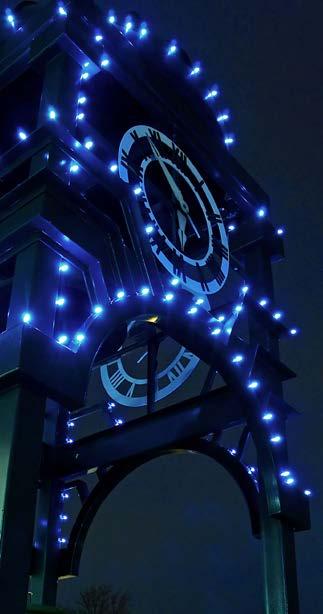











In the spirit of past comprehensive planning initiatives, this 5-year review of the City's Comprehensive Plan continues the effort to make the plan easy to digest and understand. The Plan is once again organized as two volumes - Volume I of the Plan is the Existing Conditions organized by element and Volume II of the Plan is the Vision plan organized by the City’s four core values. The Plan Summary demonstrates how plan goals and recommendations align with the community’s core values and priorities. Plan elements (topics) are common to every jurisdiction, but the core values are uniquely Rock Hill.
The Comprehensive Plan serves as the City’s foundation and guide for all aspects of long-range growth and development. Further, the Plan provides a record of the vision and direction for the City’s governing body, appointed boards, and administrative staff as they carry out projects, programs, and policies that impact our community. As with previous plans, this 5-year review of the Comprehensive Plan is based on the community’s values and priorities reflected in the four core values, goals, and recommendations. These recommendations tend to be general and big picture – they are a framework and a starting point for discussion. As a living document, the plan is not a static list of tasks, but rather a means for addressing challenges and reinforcing Rock Hill’s core values.
As part of the Charlotte metropolitan area, Rock Hill has been and continues to be a part of its regional growth. Five years ago, growth was anticipated, even certain. What was not anticipated was the national recognition that Charlotte has since received – you no longer have to say, “Charlotte, North Carolina.” Likewise, the COVID-19 pandemic of
2020 and its global impact was not anticipated. Despite our region's strong economy and community, the recovery continues for many public and private businesses. Rock Hill also experienced other forces of nature such as the Spring 2024 microburst that left wide-spread damage to homes, businesses, and property. While the City was well poised to take action and provide assistance, greater emphasis on resiliency and resiliency planning is underway.
We plan for many reasons - to direct growth, to achieve community goals, and to ensure a brighter tomorrow for our youth, to mention a few. Now, more than ever, we need to keep our focus on the target and remain agile so that we can make shifts as changes arise. This plan reinforces Rock Hill’s core values and provides recommendations to guide decision-makers on key issues. Goals and recommendations also provide a signal to neighboring jurisdictions, developers, businesses, and other community stakeholders about the City's intended future growth, thereby addressing some uncertainty in these unprecedented times.
Volume II of the Comprehensive Plan Update is organized by Rock Hill's core values. Each of the following four chapters defines a core value and sets forth how the City intends to support that value through the goals and recommendations. This Plan strives to clearly articulate the relationship between core values, goals, recommendations, priorities, and elements. There are no one-toone relationships. Goals and recommendations are often influenced by multiple elements and can support multiple core values. Thus in this Plan, goals and recommendations are listed under the core value to which they most strongly relate. The symbols are utilized throughout the plan to denote the relationships to plan elements and priorities.
A number of topics repeatedly arose during focus group meetings and similarly in the community 2020 survey feedback. Thus these topics were deemed plan priorities. The five plan priorities help to keep a clear focus on the most pertinent topics and on their corresponding goals and recommendations.
The Plan Summary chapter is a one-stop resource for decision makers that can be used during meetings and workshops when evaluating policies, rezoning requests, plans, studies, and more. The summary identifies programs, plans, and studies that should be undertaken during the next five years as well as priority investments areas.
Whereas the Comprehensive Plan is an advisory or guidance document for growth and development over the long-term, the Zoning Ordinance and its related overlay district regulations regulates land uses, along with the scale, intensity, and appearance of those uses today. When making rezoning decisions, decision-makers should first determine whether the request is consistent with the vision and recommendations set forth in the Comprehensive Plan and then they should consult the requirements of the Zoning Ordinance. When decision-makers discover that the current zoning regulations do not support the vision and recommendations set forth in the Comprehensive Plan, they should strongly consider amending them. Ideally, the City’s Comprehensive Plan and zoning regulations should align. In the real world, however, conditions are constantly changing. The City should regularly evaluate how changes impact the City’s long-term vision, and amend both the Comprehensive Plan and zoning regulations when needed.
The Comprehensive Plan is the long-range, visionary document outlining the future vision for the City, discussing goals and recommendations to achieving that vision. The Strategic Plan is a primary implementation vehicle for the Comprehensive Plan. The Strategic Plan is the document that sets the City’s short-term operational goals and measures its success in meeting them. City decision-makers should look to the Comprehensive Plan when developing the
Strategic Plan goals, many of which will directly address the core values, goals, and recommendations identified in the Comprehensive Plan. The Strategic Plan is reviewed and updated more regularly than the Comprehensive Plan. It is reviewed annually and updated every three years whereas the state requires that the City review the Comprehensive Plan every five years and update it every 10 years.
The Capital Improvement Plan (CIP) is another important tool for implementing the Comprehensive Plan. The City identifies an extensive list of candidate capital projects that are determined by City departments as desirable to maintain or improve current levels of service. These projects, and associated planning level cost estimates, are summarized in the Priority Investment Element in Volume I. The CIP is the document that carries the candidate capital projects forward to implementation. During the development of the CIP, the City identifies available revenue sources and prioritizes the candidate capital projects in a list that is grounded in fiscal reality. The CIP is updated yearly and thus reacts to changes. It is the source document for detailed project and operating costs.
The City’s core values were developed after thoughtful consideration of the synergies of what we heard from focus groups, the community at large, and decision makers during the planning process. The core values reflect the City’s highest-priority goals for the future and serve as a guiding philosophy for making planning, development, and budget decisions. These core values should

Manage growth
Grow jobs in targeted sectors
Be better stewards of our natural environment

Improve roadways - mitigate congestion & address safety
Prioritize transportation infrastructure maintenance
Support alternative modes
prioritize infill & redevelopment
maximize use of existing infrastructure & investment support comfortable mixed-use urban densities encourage convenient neighborhood shopping promote knowledge-based businesses preserve environmentally sensitive areas & open space
annex unincorporated enclaves
work with government partners to balance growth
enable a well-connected, safe & efficient transportation system support all users & transportation modes accommodate projected growth enable business & industry logistics make for ease of daily destination trips
retrofit existing streets expand trails to connect neighborhoods
inform planning at the department level and serve as a framework for the shorter-term goals and objectives of the Strategic Plan. Each of the following chapters further details the core values by providing recommendations on how to achieve the goals. Corresponding information and/or examples of work being done to achieve these goals is also provided.

Cultivate neighborhoods of lasting value & community pride
Preserve historic assets & advance cultural resources
Make a healthy lifestyle easier

Raise quality of life while pursuing economic competitiveness
Maintain facilities & infrastructure
Improve land use form & character
Celebrate our natural & built assets that strengthen Rock Hill as a destination
WHAT DOES THIS MEAN?
pursue housing affordability, support homeownership & housing needs of the future
ensure safety & encourage investment & upkeep so as to increase property values
protect neighborhoods from negative impacts
preserve their special character & their historic resources
support community engagement & recreational opportunities
promote wellness including nutritious diets & physical activity
WHAT DOES THIS MEAN?
provide inspiring community facilities generate economic vitality & make us economically competitive in the broader marketplace manage the physical environment efficiently conserve land & water resources
fund infrastructure maintenance including life cycle & replacement costs
cultivate Rock Hill's sense of place
Beginning in the fall of 2024, community engagement for the five year review of the Comprehensive Plan started with Focus Group meetings, special interest group meetings, and the City's website for feedback. Workshops were conducted with the Planning Commission (acting as the Steering Committee) and the Traffic Commission. Social media was used to poll the community and solicit feedback to various plan topics. Many meetings over the course of the year were conducted with allied groups like the Rock Hill School District and various departments of York County. Four community meetings were held (two virtually and two in-person) to assess the progress over the past five years and whether recommendations need to be updated as the community has grown. Lastly, a joint workshop with the Planning Commission and City Council was conducted prior to draft finalization and preparation for the adoption process. Note: the results from the 2020 community survey are included in the Appendix for reference.
– City of Rock Hill Core Value
The involvement of every citizen in the positive promotion of this community is a worthwhile goal. After all, it is our hometown.
198 FOCUS GROUP PARTICIPANTS
64 COMMUNITY MEETING PARTICIPANTS
55+ ALLIED AGENCY MEETINGS
100+ ONLINE COMMENTS & FEEDBACK








This chapter provides a summary of all the Plan's core values, goals and recommendations. Each goal's related elements are noted to ease cross referencing with the Existing Conditions Report. Additionally, the goals and recommendations that support the Plan priorities are highlighted on the following pages and should receive the strongest consideration for incorporation into other plans and budgets.
The list of recommendations should be seen as a starting point for discussion among decision makers and City staff, and should not be viewed as an exhaustive list or as a mandatory list of tasks to be completed by a certain deadline. New ideas and approaches, so long as they address the Plan's goals and priorities, are welcome additions to the document. Through this plan, staff wants to emphasize the importance of addressing the City’s goals, not in dictating how this should be done. The idea is that decision makers and City staff are best equipped to study the issues, engage the community, and decide how to see the recommendations through to implementation.
A column entitled "2025 Implementation Status" has been added as part of the 5-year review process to convey what progress has been achieved on plan goals and recommendations. A "+" denotes positive achievements, whereas a "-" indicates where further attention or prioritization is needed.
The focus of the Priority Investment element (PI) is capital improvements. However, several plans, programs, and studies were recommended in the Comprehensive Plan in addition to the list of capital projects. The importance of
these planning initiatives is highlighted because they may precede related larger, capital projects. The Comprehensive Plan recommends various types of small area plans including Redevelopment Area related plans, functional plans and infrastructure related plans. The Planning Department should coordinate with other City departments to ensure that these plans, programs, and studies are completed in a timely manner.
The Priority Investment Act (PIA) allows local governments to develop market-based incentives, reduce unnecessary housing regulatory requirements, and encourage development of traditional neighborhood designs and affordable housing in priority investment areas.
Rock Hill has addressed this aspect of the Act by designating seven priority investment areas in Map 1.6, Redevelopment Areas. These areas indicate where growth should be concentrated enabling a mix of housing types and costs, a variety of uses, pedestrian-friendly design, and the inclusion of open space. Capital projects identified in the Priority Investment chapter of the Existing Conditions Report support initiatives in the priority investment areas.
ELEMENT 2020 GOAL / RECOMMENDATION
Manage growth
• Continue to focus growth within the city’s core to limit sprawl and maximize infrastructure investments.
2025 IMPLEMENTATION STATUS
Percentage is a five-year average unless otherwise noted. "+" denotes positive achievements.
"-" indicates further attention or prioritization is needed.
• Guide future outward growth away from areas of concern and into areas that are best suited for proposed development, particularly residential development and its complementary uses.
• Provide adequate land for future economic development, especially in the I-77 corridor and south/ southeast of the planning area. Plan for the extension of infrastructure to create shovel-ready sites.
• Promote strategies to redevelop excess retail and enforce land use policy to guard against overdevelopment of new retail. Focus on activating streets and encouraging walkable retail.
• Prioritize annexation of unincorporated enclaves particularly those that form donut holes and result in inefficient provision of services.
• Strive to balance business and job growth with market trends and our core values.
• Seek coordination with York County and other neighboring jurisdictions regarding land use decisions.
+ 97% of approved development plans were not in Edge Management area
+ 92% of approved development plans did not need to extend infrastructure
+ 85% of approved development plans in suitable growth areas
+ Annexed 2,200 acres for industrial growth
+ Adopted SC Commerce Corridor Study for Interstate Employment Corridor
+ Continued development and redevelopment in downtown
+ Kick off of Storyline trail
+ 62% of annexations closed donut holes
+ Created Southside Tax Increment Financing (TIF) district, 2021
+ Provide County staff feedback regarding Urban Infill rezoning requests (ongoing)
+ Solicited feedback from County staff on the Future Land Use Map and proposed changes (ongoing)
2020 GOAL / RECOMMENDATION
Grow jobs in targeted sectors
Recruit targeted industries and ensure attractive sites are available.
2025 IMPLEMENTATION STATUS
Percentage is a five-year average unless otherwise noted. "+" denotes positive achievements.
"-" indicates further attention or prioritization is needed.
- Collaborate with local and state partners. + Worked with SC Department of Commerce on Palmetto Sites certification for Rock Hill Overlook site
- Strengthen our business attraction and retention through local incentives programs, like Economic Development Incentive Program (EDIP), and talent development programs.
- Provide additional incentives for those that reinforce Plan recommendations and community goals.
Expand our skilled workforce for existing businesses and targeted industries.
- Support the particular training needs of small businesses.
- Seek innovative ways to make more connections between employers and talent.
- Promote our successes in talent development, highlighting our unique diversity in education institutions and training programs.
Continue to build on the Knowledge Park Action Plan.
- Attract smaller and start-up businesses to downtown and the surrounding area.
- Cultivate and promote entrepreneurial exchanges and other programs that reinforce the special character of downtown.
- Grow Knowledge Park to include York Tech and Clinton College.
- Leverage the redevelopment of downtown to spur future revitalization particularly in the adjoining Saluda and Cherry Road corridors.
+ 19 EDIP approved projects 2020-2024, $1M+
+ 9 Facade Rehabilitation Grant projects from 20202024, $250K+
+ Development of Aspen Business Park
+ 10k+ jobs created from new businesses from 20212024
+ 6% increase in number of jobs across Redevelopment Areas
+ Conducted 700+ feasibility studies for new businesses from 2021 through 2025
+ Continued support of Talent Pipeline programs and partnerships with RHEDC, York County, and local colleges (ongoing)
+ Student-Made Rock Hill municipality-university partnership, launched March 2025
+ Southside Redevelopment Effort (formerly known as Clinton ConNEXTion Action Plan) adopted July 2021 and support of implementation (ongoing)
+ Gravity Center launched September 2021, one-stop resource for York County entrepreneurs
+ Continued support of B.E.L.L. and future B.E.L.L. Center
+ Revitalization supported in developments such as The Perch and Dunbar Place
2020 GOAL / RECOMMENDATION
Be better stewards of our natural environment
Grow in the right places.
- Guide development into areas that have existing capacity to grow or are appropriate for new growth, and away from areas that have unique and/or important environmental characteristics.
- Support more creative incentives for land conservation (e.g., York County Forever).
Benchmark the quality of our environment.
- Conduct a Tree Study so we can monitor tree canopy changes over time and its effect on air quality.
- Work with York County to create a Watershed Master Plan in order to apply for grants that support watershed quality monitoring.
- Increase citizen participation in the Adopt-AStream Program to aid in collection of water quality data.
- Fund water quality monitoring stations.
Elevate community-wide, natural environment education and programs.
- Use existing networks and channels (social media, events, etc.) in ways that are compelling to different audiences.
- Integrate natural environment education with public health and art initiatives.
- Develop a ‘keep it clean’ program for the river.
- Create better awareness of development standards.
2025 IMPLEMENTATION STATUS
Percentage is a five-year average unless otherwise noted. "+" denotes positive achievements.
"-" indicates further attention or prioritization is needed.
+ 56% of approved development plans were not in sensitive areas (Note: City Ordinance requires protection and/or mitigation of environmentally sensitive areas.)
+ 195 acres identified for brownfield remediation in past 5-years
+ 108 acres of brownfields assessed, remediated or inprocess of remediation in past 5-years
+ Urban Forest Master Plan (UFMP) adopted November 2023
+ USDA grant awarded, received $5k portion of grant for UFMP 2024 tree canopy analysis
+ Awarded grant and created Big Dutchman Creek & Tools Fork Watershed Plans, 2024
+ Inside Rock Hill, City eBulletins and updated website
+ Storm Drain Art, The Arts Council of York County’s educational art project launched in 2021
+ Bags To Benches Program converted 10K+ tons of plastics to 10 benches
PRIORITY & ELEMENT
2020 GOAL / RECOMMENDATION
Improve roadways - mitigate congestion & address safety
• Guide development, both greenfield and redevelopment, into areas that have capacity and away from congested roadways.
• Continue to expand the collector road network to mitigate congestion on major roadways.
• Routinely monitor safety and accident data to identify needed safety improvements.
• Coordinate with local SCDOT office to specifically leverage safety improvement funding.
2025 IMPLEMENTATION STATUS
Percentage is a five-year average unless otherwise noted. "+" denotes positive achievements.
"-" indicates further attention or prioritization is needed.
+ 424 development plans approved with no capacity concerns of 686 reviewed plans; 23 plans approved after Traffic Impact Analysis completed & 28 plans approved with some sort of capacity/congestion improvements
+ Completed 4 signal timing improvement projects on key corridors (Celanese Road, Dave Lyle Boulevard & Cherry Road) achieving on average 6-23% traffic volume improvements
+ I-77 new interchange [Exit 81] opened May 2024
+ In 2025 RFATS TAP yearly funding increased to $729,900, above prior year funding of $112,000*
+ In 2025 RFATS CMAQ yearly funding increased to $3.6M, above prior year funding of $2.5M*
+ 20 development plans approved requiring collector roads
+ SC Commerce Corridor expanded collector road network
+ RFATS collector road plan targeted for 2027
+ Traffic Commission, RFATS, RHPD, among other groups actively monitor & make recommendations (ongoing)
- 5-year range was a low of 3,452 collisions to a high of 3,771 collisions and an average of 3,598 collisions per year
- 5-year range was a low of 4 fatal collisions and a high of 7 fatal collisions
+ Collaborated with SCDOT on India Hook & Celanese Roads improvement project
+ Kicked off RFATS Safe Streets For All Study, 2025
2020 GOAL / RECOMMENDATION
2025 IMPLEMENTATION STATUS
Percentage is a five-year average unless otherwise noted. "+" denotes positive achievements.
"-" indicates further attention or prioritization is needed.
Prioritize transportation infrastructure maintenance
• Close the repaving funding gap by - + $80M allocated to roadway resurfacing in Pennies-5; up from $50M allocated in Pennies-4
- Requesting additional funding for maintenance from future Pennies programs
- Increasing the General Fund for roadway maintenance
• Create a recurring fund for bus maintenance and fleet replacements.
- $2.5M roadway maintenance gap in 2025, up from $1.8M in 2020; coupled with a decrease in road pavement ratings
• Develop a plan for ongoing maintenance of trails and bicycle and pedestrian facilities.
+ Funds created in 2019 and established partnerships with Comporium, Family Trust, Piedmont Medical Center and York Technical College to support free fares
+ Prioritized project initiatives to address maintenance of trails and related facilities are in place, $50,000 per year is allocated to these initiatives (ongoing)
- Demand/need far exceeds budgeted funds
2020 GOAL / RECOMMENDATION
Support alternative modes
• Encourage density in the right places to support our existing transit system and a potential rapid transit connection to Charlotte.
• Determine rapid transit system location and preserve right-of-way.
• Require major developments to integrate transit-related infrastructure when appropriate.
• Work to complete “first and last mile” of bike/pedestrian connections between transit stops and destinations.
2025 IMPLEMENTATION STATUS
Percentage is a five-year average unless otherwise noted. "+" denotes positive achievements.
"-" indicates further attention or prioritization is needed.
• Dedicate a recurring funding source to systematically expand the bike and pedestrian network.
• Nurture the continued growth and operation of the transit system including expansion and operational innovations.
+ Increased downtown densities by 522 housing units
+ Increased Cherry Road densities by 682 housing units
+ 2050 Long Range Transportation Plan adopted in 2021 and identifies general rapid transit location based on 2014 study
+ Ongoing partnerships with RFATS, County, Pennies For Progress, and other representatives to advocate for future planning of rapid transit in the region
- No progress to report on preserving right-of-way
+ 177 plans reviewed recommending integration of transit related infrastructure
+ Ensured a sidewalk connection between new Rock Hill Veteran Affairs clinic location and a transit stop
+ Complete Streets Policy, SCDOT adopted in 2021
+ Developed concept for Dave Lyle Blvd pedestrian bridge
+ $7M funding acquired for a portion of Dave Lyle Boulevard trail
+ Added transit stop to facilitate neighborhood connections between Catawba Terrace & Wal-Mart Neighborhood Market
+ Updating sidewalks at Wilson and White Streets
+ RFATS allocated TAP funding $585K for pedestrian connections around Southside Regional Park
+ Eden Terrace sidewalk at Miracle Park design & implementation, targeted for 2025 year end completion
- No progress to report on this goal
+ Renewed/created partnerships with Comporium, Family Trust, Piedmont Medical Center and York Technical College to maintain free fare transit system
2020 GOAL / RECOMMENDATION
• Make it easier to build and provide affordable rental and owner-occupied housing such as -
2025 IMPLEMENTATION STATUS
Percentage is a five-year average unless otherwise noted, "+" denotes positive achievements.
"-" indicates further attention or prioritization is needed.
- Establish an affordable housing policy. + Affordable Housing Policy (AHP) adopted & updated
- Allow for increased densities to support developer efforts to build affordable housing when compatible with surrounding land uses.
- Assist developers with participation in federal programs like the Low Income Housing Tax Credit (LIHTC) Program.
- Encourage the use of the incentives like those provided under the Economic Development Incentive Program (EDIP).
• Establish a Housing Trust Fund.
- Partner with large financial investors who have funds for low-income communities.
• Support the local homeless coalition, Catawba Area Coalition for Homelessness (CACH).
+ 10 affordable units constructed (The Exchange) under new EDIP/AHP; additional ~250 units under construction (Edgewood Place) or proposed (Herald site)
+ 286 LIHTC units constructed, additional 450+ units under construction or proposed (Note: 450+ units includes 216 units under construction at Edgewood Place which uses AHP & LIHTC.)
- Housing Trust Fund and partnerships yet to be established
+ Collaborated with CACH & HDC to establish the Rapid Rehousing program, assisted 52 households (including 63 adults and 47 children)
+ Continue to support CACH and other allied organizations like Pathways and Pilgrim's Inn including a yearly allocation of about $15,000 in addition to other funding
+ Seek grant opportunities like the $500K grant award in 2022 to address housing stability throughout York County (ongoing)
CORE
PRIORITY & ELEMENT
2020 GOAL / RECOMMENDATION
Cultivate neighborhoods of lasting value & community pride
• Encourage housing (re)development.
- Increase the supply of multi-family, mixeduse, and mixed-income communities that are appealing to an array of citizens.
- Support the development of different types of single-family housing.
- Monitor the effectiveness of the residential infill use provisions of the Zoning Ordinance.
- Encourage residential upzoning in areas that can support higher density.
- Support rezonings for senior living facilities in neighborhoods to ensure residents can age in place.
- Remediate brownfields in proximity to neighborhoods to improve quality of life.
• Reinvigorate older neighborhoods
- Add infrastructure and amenities to modernize existing neighborhoods, ensuring compatibility with neighborhood plans where applicable including implementation of Connect Rock Hill Bike & Pedestrian Master Plan
- Fix broken infrastructure like sidewalks, curbs, gutters, and lighting.
- Support Housing and Neighborhood Services’ Programs like Proactive Code Enforcement and REDI to identify neighborhoods that need help.
2025 IMPLEMENTATION STATUS
Percentage is a five-year average unless otherwise noted, "+" denotes positive achievements.
"-" indicates further attention or prioritization is needed.
+ 5,256 units entitled in past 5-years
+ 79% of approved residential development plans were multifamily, mixed-use, infill, or senior living
+ 89% of nine residential infill cases approved
+ 92% of 38 residential upzoning requests approved
+ 100% of rezoning requests in support of senior housing granted
+ 296 acres of identified brownfields in proximity to neighborhoods, 108 acres remediated and 188 in-process in past 5-years
+ Southside Redevelopment Plan adopted in 2021
+ $2.7M+/- for 5 neighborhood stormwater projects, 20212024
+ Sunset Park added to the REDI program in 2021
+ Southside revitalization projects kicked off in 2023
+ Expanded award-winning Toolshed program in 2022
+ Southside Home Improvement Program (SHIP) expanded in 2024, 8 homes refurbished in 2024
+ 90% rentals registered due to Rental Registration Ordinance adopted in 2022
+ 1,299 repairs made to sidewalks in the downtown area
CORE
PRIORITY & ELEMENT
2020 GOAL / RECOMMENDATION
2025 IMPLEMENTATION STATUS
Percentage is a five-year average unless otherwise noted. "+" denotes positive achievements.
"-" indicates further attention or prioritization is needed.
Preserve historic assets & advance cultural resources
• Support the development of -
- Performing Arts & Education Center
- African-American Cultural Center, and the
- Convention center & hotel.
• Seek opportunities to support local artists and cultural programs such as encouraging underutilized spaces for performance venues.
+ St. Mary’s Catholic Church Historic Marker approved 2024
+ Performing Arts & Education Center fundraising underway
+ Guardian Building redevelopment underway
• Complete an update to the 2004 Historic Resource Survey by 2025 identifying new candidates for historic designations.
• Support consistent economic impact studies and use the findings to guide programming and funding requests.
+ Launched the Mural Mile program, a collection of murals celebrating Rock Hill’s downtown and textile community
+ Completed Emmett Scott, McGirt Auditorium renovations, 2024
+ Storyline trail kicked of in 2025, anticipated to support Rock Hill's historic and cultural assets
+ Southside Rock Hill Historic Resource Survey completed August 2023
+ $40M+ economic impact of non-profit art & cultural organizations in York County, per the Arts & Economic Prosperity 6 (AEP6) study
CORE
PLAN PRIORITY & ELEMENT
2020 GOAL / RECOMMENDATION
Make a healthy lifestyle easier
• Make wellness and prevention a priority.
- Support organizations & programs that promote healthy living and wellness.
- Support efforts to destigmatize mental health.
- Continue to recruit champions & influencers to raise the prioritization of wellness.
• Seek ways to improve our food systems.
- Support and incentivize growers and vendors of healthy food options.
- Promote the farmer’s market and other agritourism programs while also increasing access to healthy foods.
- Encourage retailers to expand the number of local and fresh food options particularly in food deserts and swamps (as noted in Existing Conditions Report).
• Augment access to and awareness of recreation facilities and related programs.
• Explore new recreational program offerings that appeal to a wider audience.
2025 IMPLEMENTATION STATUS
Percentage is a five-year average unless otherwise noted, "+" denotes positive achievements.
"-" indicates further attention or prioritization is needed.
+ Continued support of Impact York County, Wholespire, York County Ped & Bike Coalition, and National Alliance on Mental Illness (NAMI)
+ Support of organizations/businesses that advocate wellness such as the opening of Community Medicine Pharmacy #1
+ Continued support of Old Town Market at Fountain Park
+ Support of Ag+Art Tour of York County
+ Adopted regulation changes to make it easier to operate a farm in the City including beekeeping, raising chickens, etc.
+ Armory Park 2025 renovations including new basketball courts, swings, and playground, extended walking loop, challenge course & multi-purpose field for local neighborhoods
+ Lifelong Learning @ Rock Hill continues to expand; offering adults age 50+ learning opportunities & local excursions
2020 GOAL / RECOMMENDATION
Raise quality of life while pursuing economic competitiveness
• Encourage mixed-use (re)developments that are attractive to desired employers and that are preferred by our diverse residents.
- Leverage various types of local incentive programs.
- Assist with parking and land assembly.
- Utilize creative and flexible permitting.
• Reinforce the growth of sports tourism as a strong economic engine that helps define the community and enhances quality of life.
2025 IMPLEMENTATION STATUS
Percentage is a five-year average unless otherwise noted. "+" denotes positive achievements.
"-" indicates further attention or prioritization is needed.
• Broaden activities and entertainment options for all segments of the community.
+ $200M+ redevelopment investment in University Center & continued downtown build out emphasizing a mix of uses such as The Power House & Lee Street Terraces
+ Consolidated various local incentives, now the Economic Development Incentive Program simplified for development/construction representatives
+ 25% increase in local economy due to sports tourism with hosting BMX Worlds, 2024
+ Held Adidas 3 Stripes Selected Basketball
+ Hosted ESPN's The OCHO Day
+ Implementing expansion of The Rock Hill Sports & Events Center, the Bleachery Fieldhouse
+ Planning and design underway for the Southside Regional Park
+ American Cornhole League won Betty Jo Rhea Tourism Award for tournaments that appeal to all ages
+ Miracle League of Rock Hill formed in 2021 providing opportunities for children & adults to League baseball regardless of abilities
& ELEMENT 2020 GOAL / RECOMMENDATION
Maintain facilities & infrastructure
• Facilitate future growth through well-coordinated longrange planning and budgeting.
- Identify the long-term budgetary impacts of proposed and planned capital projects (increased annual operation and maintenance costs).
2025 IMPLEMENTATION STATUS
Percentage is a five-year average unless otherwise noted. "+" denotes positive achievements.
"-" indicates further attention or prioritization is needed.
- Seek consistency between the Comprehensive Plan, the CIP, the Strategic Plan, and the annual budget.
- Coordinate major capital improvements with all relevant government agencies and providers.
• Support daily service delivery through high-quality operational management and planning practices.
- Initiate replacement programs for police and fire equipment (in addition to vehicles) to ensure equipment is replaced on a regular schedule.
- Initiate or expand programs designed to decrease crime and fire incident rates.
- Develop a building maintenance program to ensure that funding is available to renovate facilities as they age.
+ Budget adoption and Capital Improvement Plan (CIP) update (ongoing/yearly)
+ SC Commerce Corridor Study adopted March 2023
+ $9.5M grant for Southside area stormwater improvements
+ Review and update for respective plans quarterly and annually (ongoing/yearly)
+ Review and update at least annually (ongoing/yearly)
+ $10M grant to merge wastewater system with Chester County
+ Review and update police and fire equipment replacement as part of the yearly budget and CIP process (ongoing)
+ $133,000 grant to update street lighting city-wide
+ Review and update funding needs for building maintenance as part of the yearly budget and CIP process (ongoing)
2020 GOAL / RECOMMENDATION
Improve land use form & character
• Utilize the revised Future Land Use Map (FLUM) as the first resource in making land use decisions according to character areas and redevelopment corridors to ensure consistency and compatibility with vetted community vision and values.
2025 IMPLEMENTATION STATUS
Percentage is a five-year average unless otherwise noted. "+" denotes positive achievements. "-" indicates further attention or prioritization is needed.
+ 93% of annexations & rezonings consistent with Future Land Use Map (FLUM) over the past 5 years
• Work with the County to create compatible development standards for areas adjacent to incorporated cities.
• Regularly conduct research and engage the development community in discussions about consumer preferences and market trends in order to consider updates to standards.
+ City planning staff periodically discuss cases with York County staff regarding municipal infill (re)development plans (ongoing)
+ Meet yearly with representatives of the development community to solicit feedback (ongoing)
+ Meet with development representatives as various long-range plans are drafted (ongoing)
CORE
PLAN PRIORITY & ELEMENT
2020 GOAL / RECOMMENDATION
2025 IMPLEMENTATION STATUS
Percentage is a five-year average unless otherwise noted. "+" denotes positive achievements.
"-" indicates further attention or prioritization is needed.
Celebrate our natural and built assets that strengthen Rock Hill as a destination
• Make natural assets a focal point in (re)development projects.
- Encourage developers to incorporate low-impact or green building techniques.
- Support natural design elements that integrate public health, art, and our heritage.
• Convey Rock Hill’s stories better through a framework that promotes these historic and cultural resources across our region. The framework includes utilizing both physical and digital means to gain awareness.
+ The storm drain art program launched in 2021
+ Initiated refresh of the Frontis Brooks Memorial Garden
• Encourage (re)development that complements our historic & cultural resources (i.e. retail and other experience-based activities).
+ Sports & Events Center, University Center, launched 2020 Rock Hill Printing & Finishing Company, Bleachery Heritage Plaza at University Center completed 2022
+ 2025 launch of Storyline in downtown
+ Alleyways Reimagined program to activate nine alleys in downtown
+ Southside Music & Culture Trail under development
+ The Powerhouse and The Thread redevelopment projects
• Highlight unique heritage assets such as -
- Catawba Indian Nation
- Cultural District designation
- Bleachery & textile life
- African-American Cultural Center
+ Bleachery Fieldhouse under construction in 2024
+ Named the African-American cultural center in 2021 the Williams-Ivory Cultural Center


GROW INSIDE FIRST

This core value reflects the City’s emphasis on infill and redevelopment and making maximum use of existing infrastructure maintenance and investment. In downtown, new town centers, and certain redevelopment areas, this means creating comfortable mixed-use urban densities that support walking, biking, and transit and convenient neighborhood shopping. Such areas are also important in recruiting new knowledge-based businesses. In suburban areas, Grow Inside First means preserving environmentally sensitive areas and useful open space by encouraging the development of tracts already served by existing utilities and services rather than pushing out farther into undeveloped areas requiring new public investment. It means annexing unincorporated enclaves and working with York County, the school district, and other government partners to provide the most efficient service delivery possible.
Since the 2020 adoption of the Comprehensive Plan UpdateRock Hill 2030, redevelopment and growth continues across the planning area albeit at a slower pace than prior to the pandemic. Specifically redevelopment in the downtown area continues to transform Rock Hill's core. Highlights of these initiatives are captured in this chapter including programs that are focused on new knowledge-based businesses and programs that support our local entrepreneurs. Growing inside first continues to be the primary focus. Downtown has added hundreds of housing units over the past five years. Since 2020, approved residential development plans in downtown included about 500 units. Additionally, new infill subdivision construction continues, including a diverse array of housing types such as Colvin Park - single-family homes, The Park at Wilkerson - senior apartments, and Edgewood - apartments. Growth management tools, such as the annexation policy, the Economic Development Incentive Program (EDIP) and edge management, continue to support these initiatives.
While the City continues to hold a strong position in one of the nation's fastest growing metropolitan areas, the region has experienced its share of growth challenges
post-pandemic. General development is slowly recovering amid inflation, higher interest rates, and material and labor shortages. The demand for new housing continues to increase as does the need for affordable housing. Despite school impact fees in Fort Mill, Lake Wylie, and Clover, these areas continue to see more housing growth than Rock Hill, which does not have school impact fees.
In the near term, future projects planned for the city's core will continue to keep the focus on the Grow Inside First value. However, with the region's growth pressures, it will be even more challenging in future years to balance growth and land uses. It is important to citizens to continue to create mixed-use and mixed-income developments that are more walkable and have convenient neighborhood retail. It is also important to identify new greenfield growth areas as available infill space decreases. The need to work collaboratively with regional partners, both public and private, will be increasingly vital as the City continues to grow.
To gain an understanding of where and how much growth could occur in the future, a suitability analysis and a growth capacity analysis were performed. A suitability analysis of the planning area indicates where such constraints and opportunities exist, Maps 1.1 and 1.2. Further details of each of the analysis inputs are provided in the Appendix. Table 1.1 and Map 1.3 on the following pages summarize the results of the suitability analysis.
To estimate the city's growth capacity, both residential and nonresidential undeveloped land is identified. Using the land's zoning, an estimate is calculated for residential uses verses commercial uses. As shown in the below figure, there is considerably more acreage for commercial development than for residential development. The growth capacity calculation is a point-in-time estimate. Other factors can impact this projection such as land being rezoned and/or current construction plans at various stages of the development process. For example, there have been about 5,250 housing units entitled in the past 5 years through the residential plan review process. Build out of such projects can take years and some never become realized.
GROWTH CAPACITY IN CITY
Undeveloped Land A s Of June 2025
Note: Numbers are derived based on residential & commercial zoning, Planned Unit Development zoning, & master plans.
830 developable residential acres
1,650 non-entitled housing unit capacity
2,810 developable commercial acres
28M SF of commercial building area
Source: City of Rock Hill Planning & Development
utility availability
environmental constraints
roadway capacity
schools
future land use

Source: City of Rock Hill Planning & Development MAP 1.2 SUITABILITY ANALYSIS, INPUTS COMBINED Existing Utility Infrastructure Basins

Water Sewer Service Boundary Under
Approaching
For the short-term planning horizon, the Grow Inside First value will continue to be the priority; capacity and suitability analyses provide a suggested plan for the long-term growth horizon. Table 1.1 and the corresponding Map 1.3 indicate the summary of the analyses and indicate where long-term future growth is most suited at this point given the existing conditions of the road network, utility availability, environmental constraints, and proximity to schools. Continued review of existing conditions will need to be periodically conducted to assess any possible changes that would impact a proposed growth strategy.
1 congestion issues along & in proximity to Celanese Road / Old York Road
good availability, some opportunity for expansion
considerable environmental constraints including floodplain & conservation areas
good proximity & access to schools
limit general growth unless both criteria can be met -
• compatibility with surrounding land uses
• suitability conditions exist or can be achieved (includes utility availability & roadway capacity) exceptions - allow annexation for development that would be allowed under the County's jurisdiction
2 fair network, caution to avoid further congestion issues
good availability, some opportunity for expansion in northern section some environmental constraints including floodplain & poor soils
good proximity & access to schools
allow general growth along Eastview Road corridor closest to existing utility boundary depending on traffic impact analyses
3 fair network, little congestion, could be improved if route created to I-77 poor availability, expansion opportunities limited due to environmental constraints considerable environmental constraints including floodplain & poor soils fair proximity & access to schools
4 good network and capacity for growth, good access to I-77 fair availability, expansion opportunities exist some environmental constraints including floodplain & poor soils
5 fair network and capacity for growth, fair access to I-77 availability exists with good expansion opportunities limited environmental constraints
allow general growth along north/northeastern boundary closest to existing utility boundary
good proximity & access to schools allow general growth between I-77 and Neely's Creek Road closest to existing utility boundary
good proximity & access to schools
allow general growth between Sturgis and Neely Store Roads closest to existing utility boundary contingent on road capacity improvements
Source: City of Rock Hill Planning & Development
MAP 1.3 PROPOSED FUTURE GROWTH 5
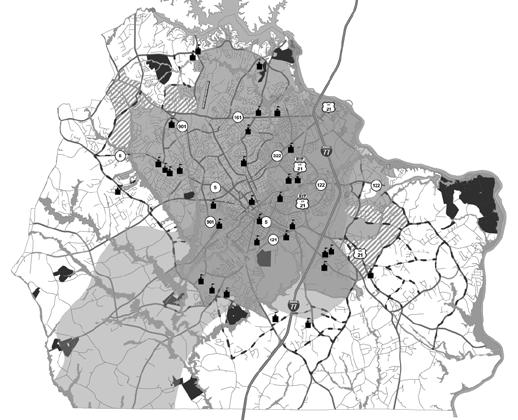
Plan for growth per Table 1.1 growth strategy
Plan for growth with contingencies per Table 1.1 growth strategy
To determine developable residential acreage and its growth capacity, all undeveloped, non-entitled land that is zoned residentially was identified. Then, housing unit capacity was calculated based on the number of units per acre permitted under the area's zoning district (minus open space requirements, road right-of-way, and other limiting factors). The result is known areas where future residential development could occur, Map 1.4. It is important to note that some non-entitled areas have constraints such as access or environmental constraints that limit development potential.
Source: City of Rock Hill Planning & Development
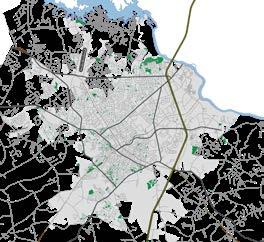
Non-entitled City limits
Many areas of downtown are being redeveloped to support an urban walkable lifestyle, while retaining the culture and history of Rock Hill. Infrastructure investments including structured parking decks, roadway and utility improvements, and public and private investments are transforming the area. Mixeduse redevelopment in University Center, a 20-acre site, is anchored by the Rock Hill Sports & Event Center and includes office, multi-family, public and open spaces. Follow the evolution at https://www.rockhillusa.com/ development-projects/knowledge-park
$500M+ projected development investment DOWNTOWN MOMENTUM
The near completion of University Center and other projects in downtown like The Exchange and The Cotton Warehouse, are a catalyst for revitalization. Active and planned projects continue to reshape the city's core including -
BRIXTON APARTMENTS [Kinger Homes]
THE GUARDIAN [Warren Norman Company, Inc.]
THE LEE STREET MASTER PLAN includingLEE STREET TERRACES [Southern Street Development]
BLEACHERY FIELDHOUSE [City of Rock Hill]
THE FORMER HERALD SITE [White Point Partners]

Rock Hill has been committed to urbanization and a balanced growth policy for many years. Revitalization and infill continue to be vital parts of the city’s growth strategy, but capacity for such growth will begin to diminish. Planning for outward growth now will help enable a balanced growth strategy in the future, which in turn, complements the city’s commitment to providing efficient services and fiscal stability.
2025 IMPLEMENTATION STATUS
Percentage is a five-year average unless otherwise noted. "+" denotes positive achievements. "-" indicates further attention or prioritization is needed.
• Continue to focus growth within the city’s core to limit sprawl and maximize infrastructure investments.
+ 97% of approved development plans were not in Edge Management area
+ 92% of approved development plans did not need to extend infrastructure
• Guide future outward growth away from areas of concern and into areas that are best suited for proposed development, particularly residential development and its complementary uses.
• Provide adequate land for future economic development, especially in the I-77 corridor and south/southeast of the planning area. Plan for the extension of infrastructure to create shovelready sites.
• Promote strategies to redevelop excess retail and enforce land use policy to guard against over-development of new retail. Focus on activating streets and encouraging walkable retail.
• Prioritize annexation of unincorporated enclaves particularly those that form donut holes and result in inefficient provision of services.
• Strive to balance business and job growth with market trends and our core values.
• Seek coordination with York County and other neighboring jurisdictions regarding land use decisions.
+ 85% of approved development plans in suitable growth areas
+ Annexed 2,200 acres for industrial growth
+ Adopted SC Commerce Corridor Study for Interstate Employment Corridor
+ Continued development and redevelopment in downtown
+ Kick off of Storyline trail
+ 62% of annexations closed donut holes
+ Created Southside Tax Increment Financing (TIF) district, 2021
+ Provide County staff feedback regarding Urban Infill rezoning requests (ongoing)
+ Solicited feedback from County staff on the Future Land Use Map and proposed changes (ongoing)
This plan includes twelve future land use character areas as shown in the Future Land Use Map, Map 1.5. The City uses a character area approach rather than a parcel-specific approach. This approach allows for greater flexibility in the land use plan, helps promote a mix of land uses where appropriate, connects common themes of land uses, and focuses the quality and character of land use in addition to its geographic pattern.
These areas fall outside the City's Water and Sewer Service Boundary and thus, are not served by the City’s utilities. Land uses are dictated by other jurisdictions.
Certain conditions protect these areas from future development or certain types of development and thus they are purposefully highlighted. These include conservation areas, parks, reservations, landfills, cemeteries, and the area around the airport.
Priority is to discourage growth and prevent sprawl; if utilities are available, roadways have capacity, and development is compatible with surrounding uses, growth may be permitted. Promote the conservation of agricultural land and other environmentally unique and/ or important areas.
NEIGHBORHOOD RESIDENTIAL
Protect the residential feel and property value of these neighborhoods, while working to better connect them to other neighborhoods and commercial areas (via roads, bicycle paths, & sidewalks).
NEIGHBORHOOD COMMERCIAL
Small, low-traffic commercial areas that provide goods and services to surrounding neighborhoods. They should provide a well-connected bicycle and pedestrian network between neighborhoods and commercial areas.
Auto-centric, community-wide commercial use types. Emphasize (re)development of new and old centers as adaptable centers that have joint access, shared use parking, and accommodate all modes of transportation within and adjacent to the site.
Large-scale, experience-based destination with supporting commercial retail. Focus on development that supports mobility including transit and is compatible with surrounding large "big box" stores.
Focus on mixed-use infill (re)development at an urban scale, size, and style that is compatible with existing buildings. Emphasize increasing occupancy in vacant commercial spaces, preserving historic buildings, and providing civic spaces and parks.
MIXED-USE CENTER
Emphasize vertical and horizontal mixed-use, a mix of housing types and price points, usable open space, and a walkable and bikeable street network. They are typically part of a master-planned development.
BUSINESS DISTRICTS
A blend of small and medium employment uses particularly those located in office or business parks and small-scale industry. Recreational opportunities, shopping, dining, and transit should be integral to these areas.
REGIONAL EMPLOYMENT
A blend of medium and large-scale employment uses particularly those located in corporate campuses, research and industrial parks, or logistic centers. These areas accommodate a wide-range of employment uses.
INDUSTRY EMPLOYMENT
These areas should accommodate the most intense, large-scale industry-related activities such as manufacturing, construction, fabrication, and excavation. Compatibility should be achieved with surrounding uses and infrastructure should be available or planned.
MAP 1.5 FUTURE LAND USE MAP (FLUM)
Source: City of Rock Hill Planning & Development
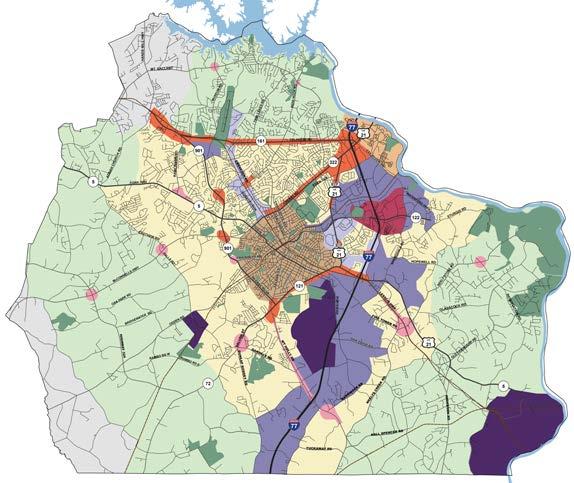
While the Future Land Use Map acts as a visual guide of the community's future desired development patterns, zoning districts are used to indicate the current allowed land uses and are parcel specific in the city's jurisdiction. Table 1.2 provides an overview of how the character areas should align with the city's generalized zoning districts. This table does not indicate that any land use will or will not be allowed, rather the City's Zoning Ordinance, 4.3.2 Table of Primary Uses, details such current zoning land uses.
= Prominent land use for the character area
= Supporting land use for the character area
1 = only after careful consideration and coordination with utilities and transportation planning
2 = in targeted areas adjacent to shopping and employment and along future transit and Rapid Transit System (RTS) routes
3 = small scale in terms of lot and/or building footprint, consistent with surrounding neighborhood residential
4 = fully integrated into a mixed use environment
5 = small scale office land uses
6 = small scale industrial land uses including maker spaces
* = Not to be confused with business district by the same name in the Zoning Ordinance
Bordered by West White Street, Stewart Avenue, and Constitution Boulevard, the Lee Street Master Plan will revive this downtown area north of Laurelwood Cemetery. The plan includes a 40,000 square-foot arena, designed to complement the Sports and Events Center, known as the Bleachery Fieldhouse. The sports complex includes basketball and volleyball courts with striping for pickleball. The master plan also includes a commercial property ideal for a restaurant or smaller-scale retail, along with 87 high-end residential units called the Lee Street Terraces, Figure 1.1.
1.1 CONCEPT RENDERING, LEE STREET MASTER PLANLEE STREET TERRACES & BLEACHERY FIELDHOUSE
Source: Rendering courtesy of Vin-Yet Architecture, LLC
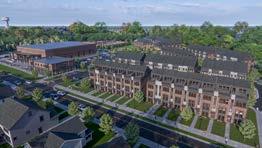
97 brownfield acres 65% remediation complete 16% remediation inprocess 19% remediation not started
Source: City of Rock Hill Planning & Development MAP 1.7 DOWNTOWN BROWNFIELD SITE STATUS
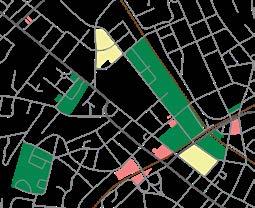
In-process Remediated Not started
The City has identified seven areas that require additional planning in terms of land use, economic development, transportation, and more. Each area is unique and requires different planning strategies to improve upon its strengths and address its challenges. Note: all plans entail community engagement, but may be led by various organizations. Unless otherwise noted below, Long-Range Planning led the planning initiative.



2017 Albright Road & Saluda Road Corridor Study
2014 Cherry Road Revitalization Strategy
2021 Southside Redevelopment Effort


Knowledge Park Action Plan
Albright Road is primarily commercial, industrial, and undeveloped land, whereas Saluda Road is primarily residential.
Major commercial arterial that had faced disinvestment, but is undergoing a transformation due to recent investments.
This southern gateway and area south of downtown is a mix of smaller commercial uses and neighborhoods. Formerly known as The Clinton ConNEXTion Action Plan, this is a community led initiative.
This area of downtown is being redeveloped into a mixed-use area that promotes a knowledge economy. The Knowledge Park Action Plan is a community led plan.
2022 South Anderson Road Corridor Study
South Anderson Road is a mix of civic, public, industrial, and commercial uses.
North Anderson Road is primarily commercial and industrial uses. The recent addition of an I-77 interchange will likely spur new development.
East Town neighborhood and a mix of offices and businesses, many of which are older and do not meet today's standards. The neighborhood includes the area bounded by Black, Main & White Streets.
Source: City of Rock Hill Planning & Development
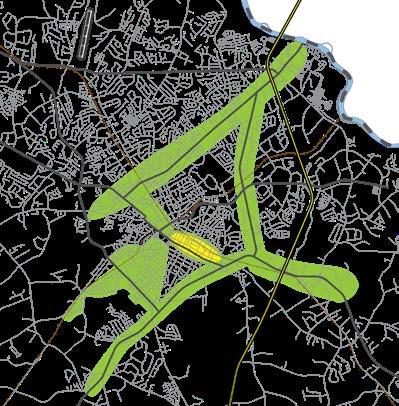
To catalyze development in certain areas of the City, Rock Hill offers financial incentives. Such incentives like the Economic Development Incentive Program (EDIP) are reviewed periodically to help manage growth. Find incentive program details here.

Erika Hogan of New Attitude Performing Arts Center is a BELL XPrize winner; she accepts a business grant in the amount of $18,000.

The Gravity Center empowers local entrepreneurs by fostering innovation and offering mentorship to support success every step of the way. As a dynamic hub, it provides access to coaching, mentoring programs, co-working spaces, events, and more. Learn more about the Gravity Center and its programs here.
The Black Economic Leadership League of Rock Hill (BELL) is advancing a bold vision for inclusive economic growth through the promotion of diverse, equitable business practices and progressive policies. Focused on fostering entrepreneurship, creating jobs, expanding leadership opportunities, and advocating for the fair distribution of city resources, BELL is working to ensure all residents have a pathway to thrive. A cornerstone of this mission is the BELL Prize, a signature initiative designed to strengthen Rock Hill’s small business ecosystem by offering aspiring entrepreneurs access to startup capital, business development workshops, and strategic support. Learn more at bellofrockhill.org.

In order to attain higher-paying wages, the City needs to develop and retain a skilled workforce and continue to provide competitive sites for businesses.
2025 IMPLEMENTATION STATUS
Percentage is a five-year average unless otherwise noted. "+" denotes positive achievements.
"-" indicates further attention or prioritization is needed.
Recruit targeted industries and ensure attractive sites are available.
- Collaborate with local and state partners.
- Strengthen our business attraction and retention through local incentives programs and talent development programs.
- Provide additional incentives for those that reinforce Plan recommendations and community goals.
Expand our skilled workforce for existing businesses and targeted industries.
- Support the particular training needs of small businesses.
- Seek innovative ways to make more connections between employers and talent.
- Promote our successes in talent development, highlighting our unique diversity in education institutions and training programs.
+ Worked with SC Department of Commerce on Palmetto Sites certification for Rock Hill Overlook site
+ 19 EDIP approved projects 2020-2024, $1M+
+ 9 Facade Rehabilitation Grant projects from 2020-2024, $250K+
+ Development of Aspen Business Park
Continue to build on the Knowledge Park Action Plan.
- Attract smaller and start-up businesses to downtown and the rest of the neighboring areas.
- Cultivate and promote entrepreneurial exchanges and other programs that reinforce the special character of downtown.
- Grow Knowledge Park to include York Tech and Clinton College.
- Leverage the redevelopment of downtown to spur future revitalization particularly in the adjoining Saluda and Cherry Road corridors.
+ 10k+ jobs created from new businesses from 2021-2024
+ 6% increase in number of jobs across Redevelopment Areas
+ Conducted 700+ feasibility studies for new businesses from 2021 through 2025
+ Continued support of Talent Pipeline programs and partnerships with RHEDC, York County, and local colleges (ongoing)
+ Student-Made Rock Hill municipality-university partnership, launched March 2025
+ Southside Redevelopment Effort (formerly known as Clinton ConNEXTion Action Plan) adopted July 2021 and support of implementation (ongoing)
+ Gravity Center launched September 2021, onestop resource for York County entrepreneurs
+ Continued support of B.E.L.L. and future B.E.L.L. Center
+ Revitalization supported in developments such as The Perch and Dunbar Place

Development pressures threaten our natural environment, and little land is conserved in our community. This challenge is compounded by a lack of knowledge and education of the general public regarding the current environmental situation.
2025 IMPLEMENTATION STATUS
PLAN PRIORITY & ELEMENT
2020 GOAL / RECOMMENDATION
Grow in the right places.
- Guide development into areas that have existing capacity to grow or are appropriate for new growth, and away from areas that have unique and/or important environmental characteristics.
- Support more creative incentives for land conservation (e.g., York County Forever).
Benchmark the quality of our environment.
- Conduct a Tree Study so we can monitor tree canopy changes over time and its effect on air quality.
- Work with York County to create a Watershed Master Plan in order to apply for grants that support watershed quality monitoring.
- Increase citizen participation in the Adopt-A-Stream Program to aid in collection of water quality data.
- Fund water quality monitoring stations.
Elevate community-wide, natural environment education and programs.
- Use existing networks and channels (social media, events, etc.) in ways that are compelling to different audiences.
- Integrate natural environment education with public health and art initiatives.
- Develop a ‘keep it clean’ program for the river.
- Create better awareness of development standards.
Percentage is a five-year average unless otherwise noted. "+" denotes positive achievements. "-" indicates further attention or prioritization is needed.
+ 56% of approved development plans were not in sensitive areas (Note: City Ordinance requires protection and/or mitigation of environmentally sensitive areas.)
+ 195 acres identified for brownfield remediation in past 5-years
+ 108 acres of brownfields assessed, remediated or in-process of remediation in past 5-years
+ Urban Forest Master Plan (UFMP) adopted November 2023
+ USDA grant awarded, received $5k portion of grant for UFMP 2024 tree canopy analysis
+ Awarded grant and created Big Dutchman Creek & Tools Fork Watershed Plans, 2024
+ Inside Rock Hill, City eBulletins and updated website
+ Storm Drain Art, The Arts Council of York County’s educational art project launched in 2021
+ Bags To Benches Program converted 10K+ tons of plastics to 10 benches

Preserve farmland & open space
Increase property values $

Improve environmental quality

Tax benefits for landowners

Source: York County Planning & Development Services
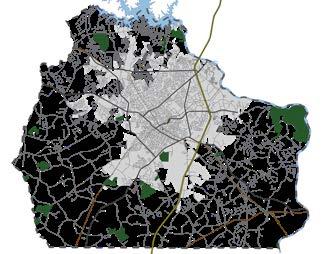

Place land in a conservation easement

Sell to a non-profit conservation organization or governmental entity
FOREVER COMMISSION NATIONS FORD LAND TRUST
Started in 1998 by York County Council, the Forever Commission has assisted in the preservation of nearly 11,000 acres in York County. To learn more, click here .
Dedicated to the preservation of open spaces, natural beauty, and scenic heritage. To learn more about their accomplishments and work, click here .



This core value reflects the need for a transportation network that accommodates all users and modes of transportation. An efficient transportation network starts with a connected road network that safely and sufficiently handles projected growth, and supports business and industry. It also includes facilities for safe walking and biking, both for transportation and as part of a healthy lifestyle. "Providing Better Connections" means retrofitting existing streets and expanding trails to connect neighborhoods with each other and with daily destinations like schools, grocery stores, and restaurants and to increase opportunities for physical activity. Finally, it includes a transit system that provides an appealing transportation alternative to those who need or prefer it.
Exciting things have occurred in the transportation world since 2020. The new I-77 interchange (Exit 81) was opened the summer of 2024, providing another gateway to the City. It is anticipated to catalyze additional development and economic growth for the City and the region. Several key roadway improvement projects have been completed that will also facilitate development like the improvements at Cel-River Road / Cherry Road / Celanese Road, Galleria Boulevard extension, and Palmetto Parkway.
York County voters passed the York County Pennies for Progress, Pennies-5 referendum in 2024. It is anticipated to generate about $410 million to fund roadway widening, safety improvements, and road maintenance, (see Map 5.10, of the Existing Conditions Report for these projects). Carryover projects represent about $225 million of this funding, $80 million is slated for road resurfacing projects, and the remaining portion is allocated to small intersection projects.
Implementation of the 2017 City-wide Bike and Pedestrian Plan, Connect Rock Hill, has opportunistically resulted in several trail segments being added since 2020 such as along Galleria Boulevard Extension, Red River Road, and Saluda Road. Funding was secured and design plans are underway for a portion of a trail along Dave Lyle Boulevard from
Annafrel Street to Apex Drive. Additionally, the concept of the Storyline trail is being initiated at the time of this review. This path would provide a connector from Winthrop University through downtown to Fountain Park and includes a pedestrian bridge over Dave Lyle Boulevard.
While these developments are great, the City still faces challenges related to traffic congestion and roadway maintenance since growth pressures are expected to continue. Residents conveyed in the 2020 community survey that road congestion and maintenance are among their top issues. Both new growth and aging roads drive demand for higher levels of funding. The City seeks opportunities to prioritize projects, mitigate congestion with a strong collector road network, and balance funding demands with road ratings. Despite increased Pennies repaving fund levels this past referendum, the City would have to triple the $1.25 million budgeted funding to maintain the current City road rating.
The State Infrastructure Bank (SIB) initially awarded nearly $38 million for Exit 82 interchange improvements. Years in the making, this project now needs $90 million to be completed.
As detailed in the Existing Conditions Transportation section, the average transportation project takes seven years to complete, and much can change during that time, particularly for a growing community. The City takes a dual approach in expanding the roadway network by prioritizing large road projects as well as constantly monitoring and addressing the collector road network.
In the general, large road projects (widenings, major resurfacing, and major intersection improvements) have been funded through Pennies for Progress and Rock HillFort Mill Area Transportation Study (RFATS). The City determines which projects to submit to these organizations based on the following criteria:
• Accident data and history
• Traffic volumes
• Level of service
• If the road or intersection is approaching, at, or exceeding its capacity (volume to capacity ratio)
• Local knowledge & community engagement
The planning area has 19 unfunded, proposed priority projects that should be considered for submission to future referendums, long range transportation plans, transportation grants, and more, Map 2.1.
A collector road network is important in mitigating congestion, especially on major corridors, by moving traffic more efficiently. Collector roads provide connectivity between different road types. The City has a strong collector road network and as we grow, new collector roads will be needed to help accommodate this growth.
RFATS developed the Collector Street Plan in 2017, which identifies collector road corridors that should be preserved and developed as the City and region grow. Per the Plan, it is recommended that local municipalities refer to it when reviewing new development proposals to ensure developers dedicate right-of-way or construct new collector roads, and preserve future collector road corridors. The City's Zoning Ordinance implements this guidance. The next update to the Collector Street Plan is targeted for 2027. Learn more here.
The City's Zoning Ordinance has design standards for new collector roads that stipulate sidewalks on both sides and bike lanes for residential collector roads. New roads should also promote connectivity. Connections to adjacent properties are required or stub-outs must be provided when the property abuts undeveloped land to ensure future connections are made.
Source: Rock Hill-Fort Mill Area Transportation Study Collector Road Study Rock Hill Planning & Development Department
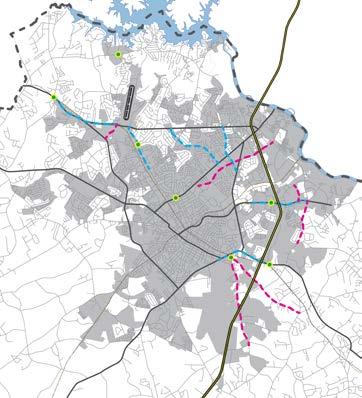

Many roads and intersections in the City are at or approaching capacity. Congested roadways pose safety challenges and increase the chances of accidents.
2025 IMPLEMENTATION STATUS
Percentage is a five-year average unless otherwise noted. "+" denotes positive achievements. "-" indicates further attention or prioritization is needed.
• Guide development, both greenfield and redevelopment, into areas that have capacity and away from congested roadways.
• Continue to expand the collector road network to mitigate congestion on major roadways.
+ 424 development plans approved with no capacity concerns of 686 reviewed plans; 23 plans approved after Traffic Impact Analysis completed & 28 plans approved with some sort of capacity/congestion improvements
+ Completed 4 signal timing improvement projects on key corridors (Celanese Road, Dave Lyle Boulevard & Cherry Road) achieving on average 6-23% traffic volume improvements
+ I-77 new interchange [Exit 81] opened May 2024
+ In 2025 RFATS TAP yearly funding increased to $729,900, above prior year funding of $112,000*
+ In 2025 RFATS CMAQ yearly funding increased to $3.6M, above prior year funding of $2.5M*
+ 20 development plans approved requiring collector roads
+ SC Commerce Corridor expanded collector road network
+ RFATS collector road plan targeted for 2027
• Routinely monitor safety and accident data to identify needed safety improvements.
+ Traffic Commission, RFATS, RHPD, among other groups actively monitor & make recommendations (ongoing)
- 5-year range was a low of 3,452 collisions to a high of 3,771 collisions and an average of 3,598 collisions per year
- 5-year range was a low of 4 fatal collisions and a high of 7 fatal collisions
• Coordinate with local SCDOT office to specifically leverage safety improvement funding.
+ Collaborated with SCDOT on India Hook & Celanese Roads improvement project
+ Kicked off RFATS Safe Streets For All Study, 2025
*Note: RFATS TAP & CMAQ funds are acquired through a competitive application process for jurisdictions within the RFATS area.

SC Target Zero is a statewide, comprehensive safety plan aimed at eliminating traffic fatalities and reducing severe injuries on SC public roads through engineering, education, enforcement, and emergency medical services.
India Hook & Celanese Roads in-town congestion mitigation project
PROJECT $9.5M


The reconfiguration of Exit 82 will improve the safety and efficiency of the City's busiest interchanges. The project was awarded a $38 million State Infrastructure Bank (SIB) grant, but requires $90 million more to implement. Construction is anticipated to begin once this additional funding is raised.
COMPLETED JUNE 2025
38K+ VEHICLES PER DAY
FIGURE 2.1 I-77 EXIT 82 INTERCHANGE ALTERNATIVE UNDER REVIEW
Source: Rock Hill-Fort Mill Area Transportation Study


A significant amount of aging transportation infrastructure exists in Rock Hill, and limited funding is available for maintenance. Annual costs increase as new projects are built, compounding this problem. In addition, the majority of the roadway infrastructure within the City is owned and maintained by the State and County.
Percentage is a five-year average unless otherwise noted.
"+" denotes positive achievements.
"-" indicates further attention or prioritization is needed.
• Close the repaving funding gap by -
- Requesting additional funding for maintenance from future Pennies programs
- Increasing the General Fund for roadway maintenance
• Create a recurring fund for bus maintenance and fleet replacements.
• Develop a plan for ongoing maintenance of trails and bicycle and pedestrian facilities.
+ $80M allocated to roadway resurfacing in Pennies-5; up from $50M allocated in Pennies-4
- $2.5M roadway maintenance gap in 2025, up from $1.8M in 2020; coupled with a decrease in road pavement ratings
+ Funds created in 2019 and established partnerships with Comporium, Family Trust, Piedmont Medical Center and York Technical College to support free fares
+ Prioritized project initiatives to address maintenance of trails and related facilities are in place, $50,000 per year is allocated to these initiatives (ongoing)
- Demand/need far exceeds budgeted funds
In 2020, the South Carolina Department of Transportation reported that about 48% of the roadways within City limits were fair or better than fair based on SCDOT's Pavement Quality Index (PQI), whereas in 2024, 32% of state roadways were fair or better than fair. This degradation of roadway conditions is due to a number of reasons including continued growth and weather impacts, but inflation of maintenance costs is the leading cause.
FIGURE 2.2 ROADWAY OWNERSHIP WITHIN CITY LIMITS
Maintenance of City-owned roads comes from three funding sources: the City’s General Fund, County Transportation Funds (gas tax), and Pennies for Progress. The City’s General Fund is only used for maintaining City-owned roads. County Transportation Funds can be used on any public County road, regardless of ownership. Funding is distributed throughout the County. The amount the City receives varies from year to year; some years the City has received no funding. In FY24/25, the City received nearly $920,000. Pennies for Progress is the largest funding source for road maintenance. Prior to Pennies-4, there was no money allocated to road maintenance, but now about 20% of the tax collection goes toward County-wide road maintenance. Pennies-5 is planned to resurface sections of Charlotte Avenue, Crawford Road, Ebenezer Road, Hollis Lakes Road, John Ross Parkway, Museum Road, Oakdale Road, Pennington Road, Rawlinson Road and Twin Lakes Road.
In 2020, $1.4M of the City's General Fund was budgeted for roadway maintenance. At that time, $3.2M was needed to maintain the City Road Rating (a funding gap of $1.8M). In 2025, $1.25M of the City's General Fund was budgeted for roadway maintenance and $3.75M was needed to maintain the City Road Rating. The funding gap increased to $2.5M. To view road ratings of City-owned roads, click here .
Note: ratings performed for city-owned roadways are not the same as those performed for state-owned roadways. *The 2024 city road rating is estimated.
Needed To Maintain City Road Rating
Needed To Maintain City Road Rating

Continued support for the new fixed-route transit system is needed for its future growth. Multi-jurisdictional coordination is needed to help bring rapid transit to Rock Hill. Residents continually voice their desires for more bike and pedestrian connections, but no dedicated funding exists.
IMPLEMENTATION STATUS
Percentage is a five-year average unless otherwise noted. "+" denotes positive achievements.
"-" indicates further attention or prioritization is needed.
• Encourage density in the right places to support our existing transit system and a potential rapid transit connection to Charlotte.
• Determine rapid transit system location and preserve right-of-way.
• Require major developments to integrate transitrelated infrastructure when appropriate.
+ Increased downtown densities by 522 housing units
+ Increased Cherry Road densities by 682 housing units
+ 2050 Long Range Transportation Plan adopted in 2021 and identifies general rapid transit location based on 2014 study
+ Ongoing partnerships with RFATS, County, Pennies For Progress, and other representatives to advocate for future planning of rapid transit in the region
- No progress to report on preserving right-of-way
+ 177 plans reviewed recommending integration of transit related infrastructure
+ Ensured a sidewalk connection between new Rock Hill Veteran Affairs clinic location and a transit stop
+ Complete Streets Policy, SCDOT adopted in 2021
• Work to complete “first and last mile” of bike/ pedestrian connections between transit stops and destinations.
• Dedicate a recurring funding source to systematically expand the bike and pedestrian network.
• Nurture the continued growth and operation of the transit system including expansion and operational innovations.
+ Developed concept for Dave Lyle Blvd pedestrian bridge
+ $7M funding acquired for a portion of Dave Lyle Boulevard trail
+ Added transit stop to facilitate neighborhood connections between Catawba Terrace & Wal-Mart Neighborhood Market
+ Updating sidewalks at Wilson and White Streets
+ RFATS allocated TAP funding $585K for pedestrian connections around Southside Regional Park
+ Eden Terrace sidewalk at Miracle Park design & implementation, targeted for 2025 year end completion
- No progress to report on this goal
+ Renewed/created partnerships with Comporium, Family Trust, Piedmont Medical Center and York Technical College to maintain free fare transit system
The Dave Lyle Boulevard Trail aims to connect the Galleria area to downtown through a shared-use path. With a total of $7.5 million in funding, the trail will include both the creation of new segments and improvements to existing pathways. Most sections of the trail will be ten feet in width. The project is currently in the design phase.
The rails-to-trails initiative has long been an aspiration of City residents and businesses. Current efforts are focused on better understanding the status of York County’s railway network and identifying potential next steps.
Similar projects have been successfully implemented across the southeast, including the Saluda Grade Rail Trail, the Shelby Rail Trail, and the Durham Belt Line.
Located between Main Street and West White Street, the downtown pedestrian bridge will create a safer and more direct connection between Downtown, University Center, and the Winthrop University area. Designed to encourage increased pedestrian activity and a secure crossing over the railroad, the bridge will serve as an iconic landmark for the community. The structure will be a cable-stayed bridge featuring two opposing needle-like towers, symbolically stitching together both sides of Downtown. The project is in the design phase.
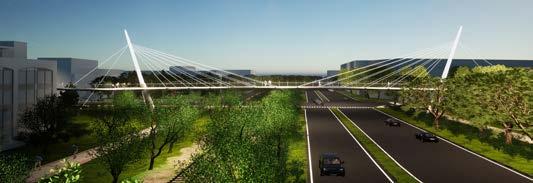


REINFORCE STRONG NEIGHBORHOODS

This core value reflects the need to reinforce a community of strong neighborhoods. Through a continuing commitment to protect and strengthen neighborhoods by ensuring safety and encouraging investment and upkeep so as to increase property values. It includes the support of programs that can increase homeownership and understands that the housing needs of the future will be different, yet new housing needs to fit into the fabric of the City. It addresses the need to protect neighborhoods from negative impacts and preserve their special character and their historic resources. It acknowledges that strong neighborhoods rely on social interaction and community engagement and on the recreational and cultural opportunities available to each neighborhood and the community as a whole. And it embraces standards that build neighborhoods designed for long-term value, while maintaining our competitive advantage of housing affordability
The goals associated with this core value have not significantly changed since 2020. The two major housing goals, to cultivate strong neighborhoods and to advance affordable housing continue to be a driving force in many activities and programs. The same can be said for initiatives focused on the goals of preserving historic assets, advancing cultural resources, and making healthy life style choices easier. However, changes in economic conditions and social trends have impacted the community's achievement of these goals.
Five years ago, the housing market was red hot in the Charlotte region with strong demand, low housing inventories, and low interest rates. Rock Hill's relative lower prices and costs positioned the community well in the larger region. Several trends have shifted over the past several years. Demand continues to be relatively strong in the region, but rising interest rates, inflation, and higher inventories have meant a shift from a seller's market to more opportunities for buyers now.
Despite the impact of the pandemic including labor shortages and supply chain issues, Rock Hill's housing stock has continued to experience modest growth and the choices in housing types has grown as well. Since the population growth has slowed compared to five years ago, the housing gap has diminished. The balance between owner-occupied housing and renter-occupied housing remains constant - 52% owner-occupied in 2023 as it was in 2018. Rock Hill has seen its share of inflation - even though median household income has risen, housing prices have too. Homes valued between $100,000 to $200,000 made up 44% of the housing stock five years ago, whereas now 22% of the housing stock is within this range. Today the majority of the housing stock (61%) is between $200,000 and $500,000.
In the past several years, the rising number of multi-family units and rising median incomes have likely contributed to the decrease in the number of cost-burdened renters. However, the rise in mortgage interest rates has slowed home sales locally compared to five years ago. Both homeowners and renters have been impacted by the rising costs of living.
Other detriments of the softened economy include an increase in the number of homeless individuals and families - 109 homeless persons in 2019 in York County during the annual point-in-time count as reported to the U.S. Department of Housing and Urban Development (HUD) compared to 229 homeless in 2025. Rock Hill continues to have a strong network of neighborhood organizations, faith-based organizations, and local agencies that serve the homeless. Likewise, the City has continued to successfully secure state and federal grants to support City-led programs and services.
Despite the harder economic times, the post-pandemic rebound has meant continued growth in cultural and historic assets. Not only have programs continued to expand, the diversity of programs has continued to grow. Thus the need to effectively market and promote these programs has become more integral to the sustainability of these offerings.
Public health continues to be a growing concern. The City has placed an emphasis on supporting programs and infrastructure to make active lifestyles easier and access to healthy foods more convenient. Local organizations and coalitions have made improvements in education and awareness, programs, and services. Yet, conflicting priorities and the desire for convenience are often cited as reasons for not getting enough physical activity or eating a well-balanced diet.
The path forward for building stronger neighborhoods is clear in certain aspects. The major goals associated with this core value are not expected to change, but economic and social trends certainly will. While recovery from the pandemic is still underway, the region and the City's housing and neighborhoods have proven to be resilient on several fronts. Despite the downturn in the economy, the housing supply and median days on the market remain relatively low compared to the recession 15 years ago. Home sale prices have risen but not to the level seen in other neighboring communities such as Fort Mill and Clover.
In terms of housing, Rock Hill will continue its focus on "Grow Inside First." However, even as growth and infill continues in our core, it will become even more challenging to provide mixed-use and mixed-income housing. In order to encourage this development, policies, incentives, and other innovative tools will need to be leveraged as land costs continue to rise in the urban core where transit and many social services are located. Rock Hill's competitive edge of being an affordable place to live will be largely dependent on this mix of housing stock. Additionally the city will need to prioritize planning for a shift in future housing development. The future growth in the region will continue to put more pressure on the supply of housing. This includes planning for the extension of utilities, the expansion of public safety services, and other related investments.
a trend comparison in the local housing market
Source: Redfin, DataCenter
Days on Market [Net Change 2015 - 2020]
What we heard
What role do you want the City to take in developing affordable housing?
2024 AVERAGE RENTS IN YORK COUNTY
Source: National Low Income Housing Coalition
Source: National Low Income Housing Coalition, City of Rock Hill & Rock Hill School District Three 2020 survey results
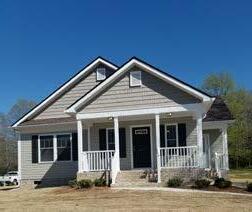
$1,384 one-bedroom
$1,554 two-bedroom
AVERAGE MORTGAGE IN ROCK HILL
Based on a 30-year fixed loan for a home valued at $267,400 (Rock Hill Median Home Value) 6.6% interest rate, no taxes or insurance included.
Source: American Community Survey, 2023 5-year & mortgage calculator
$1,700 0% down payment $1,366 20% down payment






An individual should spend no more than 30% of his/her gross monthly income on rent or a mortgage. However, many low-income earners in York County cannot afford a 1- or 2-bedroom apartment or house alone. These are the faces of those who need affordable housing on a single income.

Housing costs are appreciating due to a low supply and high demand. The appreciation has resulted in an increase in people who are cost-burdened, particularly renters. South Carolina statutes do not permit municipalities to require an affordability component in new developments, so innovative methods are needed.
IMPLEMENTATION STATUS
Percentage is a five-year average unless otherwise noted. "+" denotes positive achievements.
"-" indicates further attention or prioritization is needed.
Make it easier to build and provide affordable rental and owner-occupied housing such as -
- Establish an affordable housing policy.
- Allow for increased densities to support developer efforts to build affordable housing when compatible with surrounding land uses.
- Assist developers with participation in federal programs like the Low Income Housing Tax Credit (LIHTC) Program.
- Encourage the use of the incentives like those provided under the Economic Development Incentive Program (EDIP).
Establish a Housing Trust Fund.
- Partner with large financial investors who have funds for low-income communities.
Support the local homeless coalition Catawba Area Coalition for Homelessness (CACH).
+ Affordable Housing Policy (AHP) adopted & updated
+ 10 affordable units constructed (The Exchange) under new EDIP/AHP; additional ~250 units under construction (Edgewood Place) or proposed (Herald site)
+ 286 LIHTC units constructed, additional 450+ units under construction or proposed (Note: 450+ units includes 216 units under construction at Edgewood Place which uses AHP & LIHTC.)
- Housing Trust Fund and partnerships yet to be established
+ Collaborated with CACH & HDC to establish the Rapid Rehousing program, assisted 52 households (including 63 adults and 47 children)
+ Continue to support CACH and other allied organizations like Pathways and Pilgrim's Inn including a yearly allocation of about $15,000 in addition to other funding
+ Seek grant opportunities like the $500K grant award in 2022 to address housing stability throughout York County (ongoing)

The City has low homeownership rates, particularly in older neighborhoods. While progress has been made in reinvigorating older and declining neighborhoods, many homes are still sitting vacant or are in disrepair, and infrastructure maintenance and modernization is needed. The City lacks a supply of new housing that caters to a wide audience and allows for residents to age in place.
RECOMMENDATION 2025 IMPLEMENTATION STATUS
Percentage is a five-year average unless otherwise noted. "+" denotes positive achievements.
"-" indicates further attention or prioritization is needed.
Encourage housing (re)development.
- Increase the supply of multi-family, mixed-use, and mixed-income communities that are appealing to an array of citizens.
- Support the development of different types of singlefamily housing.
- Monitor the effectiveness of the residential infill use provisions of the Zoning Ordinance.
- Encourage residential upzoning in areas that can support higher density.
- Support rezonings for senior living facilities in neighborhoods to ensure residents can age in place.
- Remediate brownfields in proximity to neighborhoods to improve quality of life.
Reinvigorate older neighborhoods
- Add infrastructure and amenities to modernize existing neighborhoods, ensuring compatibility with neighborhood plans where applicable including implementation of Connect Rock Hill Bike & Pedestrian Master Plan
- Fix broken infrastructure like sidewalks, curbs, gutters, and lighting.
- Support Housing and Neighborhood Services’ Programs like Proactive Code Enforcement and REDI to identify neighborhoods that need help.
+ 5,256 units entitled in past 5-years
+ 79% of approved residential development plans were multi-family, mixed-use, infill, or senior living
+ 89% of nine residential infill cases approved
+ 92% of 38 residential upzoning requests approved
+ 100% of rezoning requests in support of senior housing granted
+ 296 acres of identified brownfields in proximity to neighborhoods, 108 acres remediated and 188 inprocess in past 5-years
+ Southside Redevelopment Plan adopted in 2021
+ $2.7M+/- for 5 neighborhood stormwater projects, 2021-2024
+ Sunset Park added to the REDI program in 2021
+ Southside revitalization projects kicked off in 2023
+ Expanded award-winning Toolshed program in 2022
+ Southside Home Improvement Program (SHIP) expanded in 2024, 8 homes refurbished in 2024
+ 90% rentals registered due to Rental Registration Ordinance adopted in 2022
+ 1,299 repairs made to sidewalks in the downtown area
neighborhoods -
• Homeowner rehab
• Grants
• Foreclose prevention
• Recreational activities
• Installing smoke alarms
• New development
• Fire education
• Rolling in Rock Hill
• Crime mapping
• Little free libraries
• Book mobile
• Neighborhood crime watch
• Community clean-up
• Neighborhood tool shed
Resource Education Development Initiative
The REDI program uses a data-driven approach to improve neighborhood quality. It looks at statistical relationships and correlations between neighborhood violations and the frequency of public safety calls, crimes committed, and household income. Using this information, a tailored approach is used to improve neighborhood conditions. The Neighborhood Services Department has identified neighborhoods in which to implement this program. The program was first implemented within the Catawba Terrace neighborhood. Since implementation, crime and code violations have dramatically reduced. Given the success of the pilot neighborhood, efforts are now underway within the Sunset Park neighborhood.
With a growing senior population, it is important to prioritize opportunities for aging in place within the community. To support residents as they age, the City should continue to promote senior housing options like The Park at Wilkerson Apartments, which opened in March 2024. The 136-unit community offers affordable, incomerestricted housing for active adults aged 55 and older, featuring modern amenities and shared spaces. The development has reached full occupancy, reflecting strong demand and community impact.
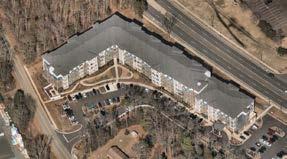

Protecting the community's historic assets and cultural resources not only requires a collective effort to safeguard and share the knowledge about these assets, but it also requires financial resources that are often limited. Many organizations compete for the same funding sources.
2025 IMPLEMENTATION STATUS
Percentage is a five-year average unless otherwise noted. "+" denotes positive achievements.
"-" indicates further attention or prioritization is needed.
Support the development of -
- Performing Arts & Education Center
- African-American Cultural Center, and the
- Convention center & hotel.
Seek opportunities to support local artists and cultural programs such as encouraging underutilized spaces for performance venues.
+ St. Mary’s Catholic Church Historic Marker approved 2024
+ Performing Arts & Education Center fundraising underway
+ Guardian Building redevelopment underway
Complete an update to the 2004 Historic Resource Survey by 2025 identifying new candidates for historic designations.
Support consistent economic impact studies and use the findings to guide programming and funding requests.
+ Launched the Mural Mile program, a collection of murals celebrating Rock Hill’s downtown and textile community
+ Completed Emmett Scott, McGirt Auditorium renovations, 2024
+ Storyline trail kicked of in 2025, anticipated to support Rock Hill's historic and cultural assets
+ Southside Rock Hill Historic Resource Survey completed August 2023
+ $40M+ economic impact of non-profit art & cultural organizations in York County, per the Arts & Economic Prosperity 6 (AEP6) study
In 2015, Comporium unveiled a plan to redevelop a block next to Fountain Park. The mixed-use project includes a Performing Arts & Education Center, also known as the Marlie Center. The 500-seat center has many stakeholders excited, including the Arts Council of York County and Winthrop University. Schematic design is complete and a site location for the Marlie Center is anticipated at the north side of Fountain Park. Fundraising is underway. Learn more about this project at theartscenterfp.org of the arts
$40+ 665 $2.4
MILLION
York County Industry
FULL-TIME JOBS
York County
MILLION S.C. & Local Revenue
FIGURE 3.2 PROPOSED PERFORMING ARTS & EDUCATION CENTER
Source: Rendering Courtesy of 505Design, Inc.


Higher medical-related costs are reflective of the rising trends in poor health. Ease of access to health providers, fresh foods, and recreational facilities for physical activity are key to wellness and prevention.
2025 IMPLEMENTATION STATUS
Percentage is a five-year average unless otherwise noted. "+" denotes positive achievements.
"-" indicates further attention or prioritization is needed.
Make wellness and prevention a priority.
- Support organizations & programs that promote healthy living and wellness.
- Support efforts to destigmatize mental health.
- Continue to recruit champions & influencers to raise the prioritization of wellness.
Seek ways to improve our food systems.
- Support and incentivize growers and vendors of healthy food options.
- Promote the farmer’s market and other agritourism programs while also increasing access to healthy foods.
- Encourage retailers to expand the number of local and fresh food options particularly in food deserts and swamps (as noted in Existing Conditions Report).
Augment access to and awareness of recreation facilities and related programs.
Explore new recreational program offerings that appeal to a wider audience.
+ Continued support of Impact York County, Wholespire, York County Ped & Bike Coalition, and National Alliance on Mental Illness (NAMI)
+ Support of organizations/businesses that advocate wellness such as the opening of Community Medicine Pharmacy #1
+ Continued support of Old Town Market at Fountain Park
+ Support of Ag+Art Tour of York County
+ Adopted regulation changes to make it easier to operate a farm in the City including beekeeping, raising chickens, etc.
+ Armory Park 2025 renovations including new basketball courts, swings, and playground, extended walking loop, challenge course & multi-purpose field for local neighborhoods
+ Lifelong Learning @ Rock Hill continues to expand; offering adults age 50+ learning opportunities & local excursions
Source: National Alliance on Mental Illness
1. Talk openly about mental health
2. Educate yourself and others
3. Be conscious of language
4. Encourage equality between physical and mental illness
5. Show compassion for those with mental illness
6. Choose empowerment over shame
7. Be honest about treatment
8. Let the media know when they’re being stigmatizing
9. Don’t harbor self-stigma

A coalition of coalitions, Impact York County is the umbrella organization for 20+ coalition members of healthcare providers, organizations, schools/ universities, the City, and non-profits. Its mission is to improve community health and wellness. Impact York County serves as a one-stop shop for member groups' programs and resources. For example, their website highlights educational events, fresh produce boxes, and activities happening within the County. To learn more about Impact York County and its resources, view their website here.
There is no health without mental health.
- David Satcher, former U.S. Surgeon General



ENSURE FUNCTIONALITY WITH INSPIRING DESIGN
The objective of this core value is to advance quality of life particularly as it relates to the physical environment and the experiences associated with our place called "Rock Hill, South Carolina." This value reminds us of the need to fund infrastructure maintenance, including planning for life cycle and replacement costs. It includes providing inspiring community facilities that bring us together, generate economic vitality and make us economically competitive in the broader marketplace. This core value also entails encouraging design guidelines and regulations that support the many facets of life (live, work, and play) in such a way that fosters community pride and celebrates our unique community characteristics.
This period of growth and redevelopment has not been without its challenges. Many of the redevelopment projects faced labor shortages, supply chain issues, and rising construction costs through the pandemic and beyond. Recovery continues as the economy tries to manage through inflation and rising interest rates. The City's tradition of fiscal prudence and efficient operations has been vital during these uncertain times. Despite rising costs, the City's financial prowess has enabled the continued infrastructure and utility system upgrades and expansions like the water filter plant, wastewater treatment plant, and Advanced Metering Infrastructure (AMI) system. These types of infrastructure investments will continue to be important as the community grows.
Similarly, Rock Hill has continued to pursue its focus on sports tourism. Coupling this with amenities and programs that support an active lifestyle, like those in Riverwalk, have proven successful. The Rock Hill Sports and Event Center is an example of how recreational facilities are integrated with redevelopment goals (part of the University Center redevelopment), acting as a catalyst within the community.
Thanks to public and private investment in downtown, revitalization and redevelopment has gained tremendous momentum. Not only have more housing units been added, the various types of housing have grown including affordable and workforce units. More small businesses are locating to downtown. Despite the number of construction sites, redevelopment has been done with an appreciation for Rock Hill's history and culture. This has become a tradition seen in many projects such as - 139 Main (apartment and retail development) and the adjacent Freedom Walkway, the Exchange and the relocation of the caboose to create Caboose Park, University Center and the inclusion of the Bleachery Heritage Plaza. Projects like these elevate Rock Hill by highlighting its unique character and sense of place.
The City's strong fiscal management paired with the commitment to be a preferred place to live, do business, and visit has placed the community in a strong position for our future. Named by Money 50 Best Places To Live In The U.S. and Fortune Magazine Best Places To Live For Families, Rock Hill's momentum has become a force.
Even though the goals associated with this core value are expected to hold true for the foreseeable future, some of the recommendations may struggle to come to fruition. The pandemic caused many to rethink what quality of life means to them and their families. While there is much speculation about what the long-term implications will be, most anticipate more change lies ahead for the housing, retail, and office markets. Conversely, the City's infrastructure investments and capital improvement projects for the next 10+ years will support a foundation for our community resiliency and vitality.
The momentum of redevelopment in downtown is expected to continue into the next decade. Evidence of that is seen in the planning and design of projects like the redevelopment of the Herald site, the Bleachery Fieldhouse, The Guardian, and Lee Street Terraces. These development projects will be connected like never before with the implementation of the pedestrian bridge across Dave Lyle Boulevard and the Storyline trail.
The spark is not exclusive to development and growth. As the downtown experience becomes more layered and connected, community pride does as well. The sense of community is evident in activities led by neighborhood groups and community organizations. The Mural Mile Program is one example of initiatives that demonstrate the community's enthusiasm for life in Rock Hill. The RHEDC's mural mile program kicked into gear in 2020 and currently includes eight murals. Individually and collectively, these projects add to the sense of pride in our community.
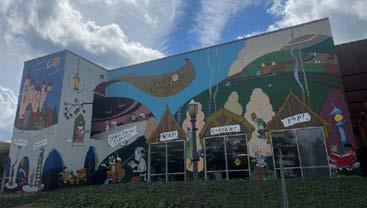


The Storyline is a proposed linear park located in the heart of downtown, designed to connect Fountain Park with Winthrop University. This vibrant park will offer a seamless experience for strolling, dining, shopping, and exploring the rich history of Rock Hill. Currently in the design phase, the concept is intended to be an immersive path of exploration where community, culture, and commerce converge to celebrate Rock Hill as a community.
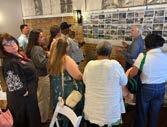


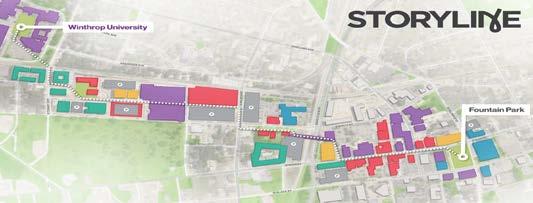

The City will continue to build on its strengths and correct weaknesses to ensure its attractiveness to future residents and business owners. The City needs to market the community’s many advantages to attract jobs and investment.
2025 IMPLEMENTATION STATUS
&
2020 GOAL / RECOMMENDATION
• Encourage mixed-use (re)developments that are attractive to desired employers and that are preferred by our diverse residents.
- Leverage various types of local incentive programs.
- Assist with parking and land assembly.
- Utilize creative and flexible permitting.
• Reinforce the growth of sports tourism as a strong economic engine that helps define the community and enhances quality of life.
Percentage is a five-year average unless otherwise noted.
"+" denotes positive achievements.
"-" indicates further attention or prioritization is needed.
+ $200M+ redevelopment investment in University Center & continued downtown build out emphasizing a mix of uses such as The Power House & Lee Street Terraces
+ Consolidated various local incentives, now the Economic Development Incentive Program simplified for development/construction representatives
+ 25% increase in local economy due to sports tourism with hosting BMX Worlds, 2024
+ Held Adidas 3 Stripes Selected Basketball
+ Hosted ESPN's The OCHO Day
+ Implementing expansion of The Rock Hill Sports & Events Center, the Bleachery Fieldhouse
+ Planning and design underway for the Southside Regional Park
• Broaden activities and entertainment options for all segments of the community.
+ American Cornhole League won Betty Jo Rhea Tourism Award for tournaments that appeal to all ages
+ Miracle League of Rock Hill formed in 2021 providing opportunities for children & adults to League baseball regardless of abilities
The Southside Regional Park is a multi-phase, 140-acre development spanning from Heckle Boulevard to East Black Street. The park features a variety of amenities aiming to cater to diverse community needs. It has multiple planned facilities, including sports fields, playgrounds, and walking trails. This park aims to enhance the local tourism while also providing a vibrant communal space for the community. Still in the early design stages, this project is set to begin construction in 2025-2026.
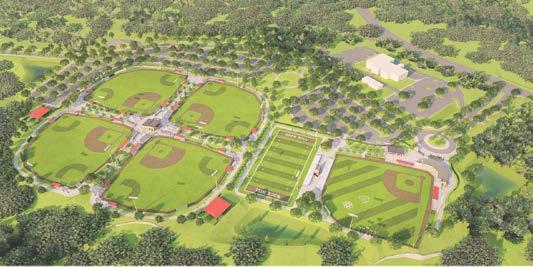

While the City of Rock Hill has experienced strong growth over the past 18 years, some jurisdictions in the region have experienced double and triple the growth that Rock Hill has. The City provides water to its residents as well as many of these jurisdictions as wholesale customers like the Town of Fort Mill and the City of Tega Cay. With more households comes the need for more water. Thus Rock Hill recently completed an upgrade at the Water Filter Plant in order to increase the permitted capacity from 36 MGD (Million Gallons per Day) to 48 MGD. Additionally, upgrades are underway to increase capacity at the Manchester Wastewater Treatment Plant from 20 MGD to 30 MGD.
The I-77 corridor is an area with tremendous development pressures. The South Carolina Commerce Corridor Study was conducted to provide an initial cost estimate of future infrastructure needs in this area including roadway, storm water, water, sewer, and electric. This analysis was performed by projecting future, nonresidential development along the corridor from north of Anderson Road to the York County/ Chester County line. City staff worked with consultants to project vehicular travel demands to estimate roadway capacity needs. This study also includes recommendations regarding ways to encourage manufacturing land uses to locate in this area.
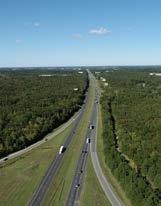

To provide high quality service levels, planning and budgeting is needed for both growth and routine maintenance. A significant number of City facilities, amenities, and infrastructure are reaching the end of their lifecycle, and there is limited funding available for maintenance.
• Facilitate future growth through well-coordinated longrange planning and budgeting.
- Identify the long-term budgetary impacts of proposed and planned capital projects (increased annual operation and maintenance costs).
- Seek consistency between the Comprehensive Plan, the CIP, the Strategic Plan, and the annual budget.
- Coordinate major capital improvements with all relevant government agencies and providers.
• Support daily service delivery through high-quality operational management and planning practices.
- Initiate replacement programs for police and fire equipment (in addition to vehicles) to ensure equipment is replaced on a regular schedule.
- Initiate or expand programs designed to decrease crime and fire incident rates.
- Develop a building maintenance program to ensure that funding is available to renovate facilities as they age.
2025 IMPLEMENTATION STATUS
Percentage is a five-year average unless otherwise noted. "+" denotes positive achievements.
"-" indicates further attention or prioritization is needed.
+ Budget adoption and Capital Improvement Plan (CIP) update (ongoing/yearly)
+ SC Commerce Corridor Study adopted March 2023
+ $9.5M grant for Southside area stormwater improvements
+ Review and update for respective plans quarterly and annually (ongoing/yearly)
+ Review and update at least annually (ongoing/ yearly)
+ $10M grant to merge wastewater system with Chester County
+ Review and update police and fire equipment replacement as part of the yearly budget and CIP process (ongoing)
+ $133,000 grant to update street lighting city-wide
+ Review and update funding needs for building maintenance as part of the yearly budget and CIP process (ongoing)

Many developments were built before design standards were in place and sites are difficult and costly to retrofit once built. Older housing stock does not align with changing housing and lifestyle preferences. Poorly designed sites can negatively influence people’s perception of certain uses.
&
• Utilize the revised Future Land Use Map (FLUM) as the first resource in making land use decisions according to character areas and redevelopment corridors to ensure consistency and compatibility with vetted community vision and values.
• Work with the County to create compatible development standards for areas adjacent to incorporated cities.
2025 IMPLEMENTATION STATUS
Percentage is a five-year average unless otherwise noted. "+" denotes positive achievements.
"-" indicates further attention or prioritization is needed.
+ 93% of annexations & rezonings consistent with Future Land Use Map (FLUM) over the past 5 years
+ City planning staff periodically discuss cases with York County staff regarding municipal infill (re)development plans (ongoing)
• Regularly conduct research and engage the development community in discussions about consumer preferences and market trends in order to consider updates to standards.
+ Meet yearly with representatives of the development community to solicit feedback (ongoing)
+ Meet with development representatives as various long-range plans are drafted (ongoing)
The Urban Forest Master Plan identified new greenfield development as the biggest threat to our tree canopy. About 85% of approved development plans over the last 5 years were for industrial or residential projects which primarily occur on large, undeveloped tracts. In order to mitigate the large losses of tree canopy as a result of these projects, the Plan recommends increasing tree save in our zoning ordinance, and identifying partners with off-site locations where trees could be planted if the tree save requirements could not be met. The next step in this initiative is to propose an update to our tree save requirements in the Zoning Ordinance to better realize the benefits of a more robust tree canopy such as heat mitigation, quality of life, and recreation.
Applying our current development regulations per land use type, a site's canopy loss on average is approximately . . .

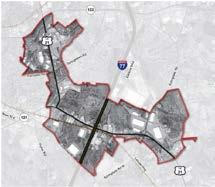
South Anderson Road is one of the Redevelopment Areas. Characterized by business and industrial parks, this corridor is an important commercial area which includes the campus of York Technical College. The 2022 Study examined existing conditions and makes recommendations to support the future vitality of area. These recommendations focus on long-term redevelopment of commercial properties, elevating the corridor's aesthetic and extending placemaking elements throughout the corridor that acts as a major gateway into the City.

Rock Hill has a rich history, and many natural and cultural resources. However, the public is not always aware of all of these resources and programs available in the City. Sharing our story is integral to sustaining this heritage, and raising awareness is a continuous need.
&
GOAL / RECOMMENDATION
• Make natural assets a focal point in (re)development projects.
- Encourage developers to incorporate low-impact or green building techniques.
- Support natural design elements that integrate public health, art, and our heritage.
• Convey Rock Hill’s stories better through a framework that promotes these historic and cultural resources across our region. The framework includes utilizing both physical and digital means to gain awareness.
2025 IMPLEMENTATION STATUS
Percentage is a five-year average unless otherwise noted.
"+" denotes positive achievements.
"-" indicates further attention or prioritization is needed.
• Encourage (re)development that complements our historic & cultural resources (i.e. retail and other experience-based activities).
+ The storm drain art program launched in 2021
+ Initiated refresh of the Frontis Brooks Memorial Garden
• Highlight unique heritage assets such as -
- Catawba Indian Nation
- Cultural District designation
- Bleachery & textile life
- Williams-Ivory Cultural Center
+ Sports & Events Center, University Center, launched 2020 Rock Hill Printing & Finishing Company, Bleachery Heritage Plaza at University Center completed 2022
+ 2025 launch of Storyline in downtown
+ Alleyways Reimagined program to activate nine alleys in downtown
+ Southside Music & Culture Trail under development
+ The Powerhouse and The Thread redevelopment projects
+ Bleachery Fieldhouse under construction in 2024
+ Named the African-American cultural center in 2021 the Williams-Ivory Cultural Center
The Southside Redevelopment Effort (formerly known as the Clinton ConNEXTion Action Plan) is a community-led effort that focuses on improving the quality of life along the Southside of Rock Hill. This initiative strives to encourage economic growth, address housing needs, enhance educational opportunities, and improve the health and wellbeing of the residents. Since the adoption of the Plan in July 2021, renovations to McGirt Auditorium and Armory Park, and various beautification and revitalization efforts have been completed. The Plan focuses on seven core principles and four overarching themes to guide the planning process. Learn more about the Plan and additional projects here.
This public art project led by The Arts Council of York County was launched in 2020 to focus on local water heritage and water quality. Selected artists turn their concepts into reality in order to remind us that our neighborhoods are all connected to our waterways and lakes. Two drains locations are to be added annually.

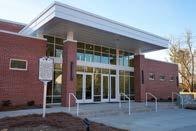
-Dr. Kimberly P. Johnson “ “
When you dream bold dreams, nothing can stop you from staying focused on what you need to do.









Source: City of Rock Hill Planning & Development
The suitability analysis is used to help derive the Future Land Use Map which guides future development in the City and Planning Area. The analysis looks at different inputs that make an area more or less suitable for future development. When all inputs are combined, a more clear picture of growth areas emerge. The suitability analysis facilitates discussions between the general public, developers, staff, and elected officials about why certain areas are more conducive for future development than others.
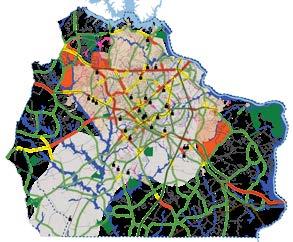
Areas that are served or are capable of being served by water and sewer are more suitable for development. The map below shows which areas can likely be served today (existing utility infrastructure) or have the potential to be served in the future (watershed basins). As territory is annexed into the city's jurisdiction, the Water and Sewer Service Boundary is amended to include these newly annexed areas.
Source: City of Rock Hill Planning & Development
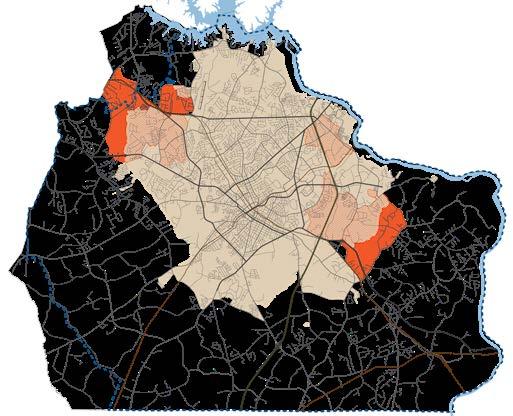
Existing Utility Infrastructure
Basins
Water and Sewer Service Boundary
Areas within the floodplain or flood-prone areas are prohibited from development; likewise areas that are conserved through easements or other means are also protected from development. Blackjack soil is difficult to develop on due to rockiness and poor drainage. The map below shows these areas that limit development potential.
Source: City of Rock Hill Planning & Development
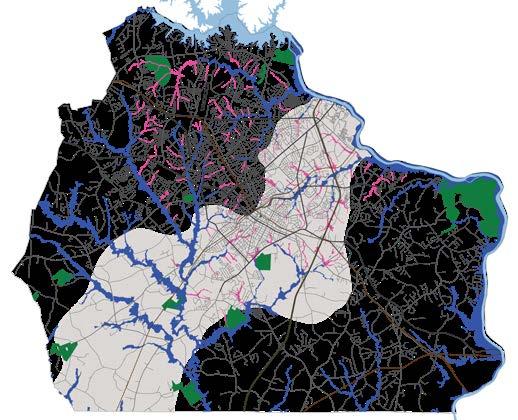
Conservation Areas
Flood-prone Areas
100-Year Floodplain
Blackjack Soil
Volume-to-capacity is a ratio that compares the number of vehicles per day a road handles versus the number of vehicles per day the road was designed to accommodate. Future development should be limited where roads are at or above capacity until improvements can be made to alleviate the issue. Areas where roads are under capacity are better suited for future development.
Source: City of Rock Hill Planning & Development, 2017 RFATS Collector Road Study
Volume-to-Capacity Ratio
Under Capacity
Approaching Capacity At or Above Capacity
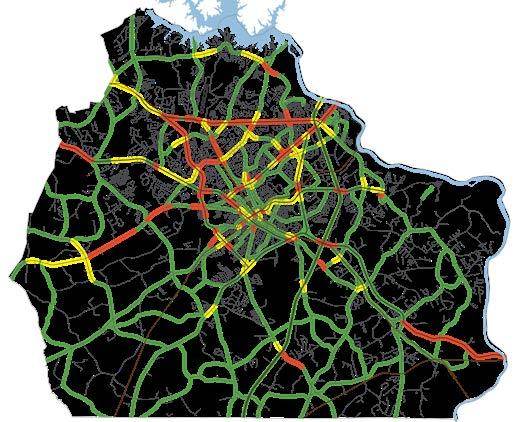
Both the 2017 and 2022 results are provided here, Map A.4 and Map A.5 respectively. It is suggested that the 2022 results reflect lower ratios due to the impact of the pandemic on traffic volumes and patterns. As recovery continues, it is anticipated that ratios will return to the 2017 levels. Thus the 2017 ratios are given prominence in the suitability analysis.
Source: City of Rock Hill Planning & Development, 2022 RFATS Collector Road Study
Under Capacity Volume-to-Capacity Ratio
Approaching Capacity At or Above Capacity
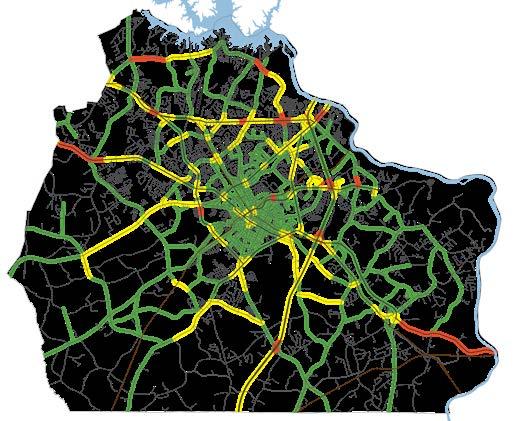
Proximity and ease of access to schools is important in helping to mitigate congestion during the morning and afternoon commutes. Land uses and future development that is in proximity to schools require additional consdieration.
Source: City of Rock Hill Planning & Development
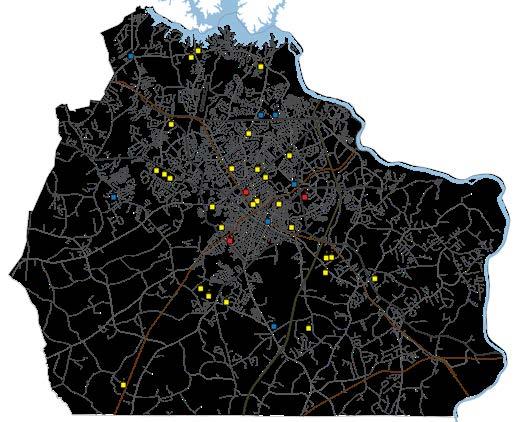
Charter and private schools
Colleges and universities
The community survey conducted in 2020 included 16 total questions, four of which were demographic questions. The questions included multiple choice and write-in options to assess respondents' views of the current and future state of the City of Rock Hill.
The survey was provided in both hardcopy and digital formats in English and Spanish. The majority of responses were received online with the support of social media such as the City's Facebook page. A total of 2,360 responses were received over the course of a month and a half.
Responses reflect the many voices of Rock Hill and the current events happening both locally and nationwide. This community feedback is incorporated into the goals and recommendations of the Comprehensive Plan.

Of the approximately 2,360 respondents, 2,105 are residents of the City, while 1,152 are property owners, 209 are business owners, and 33 specified other. The majority of other responses included those that live in the County, work in Rock Hill, or spend time here shopping and recreating. About 50% of respondents report living in Rock Hill 16 plus years.
FIGURE A.1 RELATIONSHIP TO CITY
responses - 3,499
*More than one response allowed.
NUMBER OF RESPONSES*
Percentage of Responses
FIGURE A.2 NUMBER OF YEARS A RESIDENT
responses - 2,274
The vast majority of respondents claim a Rock Hill zip code. The most common other response included Fort Mill zip codes. Of the 2,272 respondents replying to the question about their place of work, approximately 46% work in Rock Hill and another 14% work elsewhere in the County. Other responses included stay-at-home moms, remote workers, and disabled residents.
FIGURE A.3 SURVEY PARTICIPANTS' PRIMARY ZIP CODE
FIGURE A.4 RESPONDENT PLACE OF WORK
Of the 1,810 responses to this question, 1,503 responded that the core values are representative of their aspirations for Rock Hill's future. Those that were uncertain included 184 respondents, and 123 responded that they did not feel the core values are representative of their aspirations for Rock Hill's future.
About 400 respondents replied to this open-ended question. Responses were summarized into major themes (Figure A.6) and a word/phrase count was used to compile the word cloud, Figure A.6. The word cloud takes into account the number of reoccurring themes - the more a theme is mentioned, the larger the theme's font size. The phrase 'Rock Hill For All' is a commonly used community term referring to various topics related to social justice and equality.
FIGURE A.7 OTHER COMMUNITY ASPIRATIONS
Total responses - 402
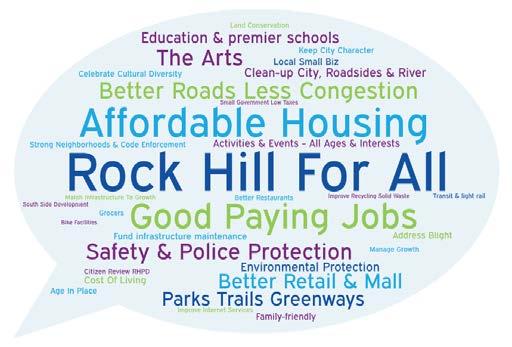
How do you feel about the pace of growth and development over the past five years?
There were 2,145 responses to the pace of growth question. While the majority of respondents believe that the pace is about right, 24% believe it is too quick and 16% believe it is too slow. Of the other responses, the most common write-ins included development being focused in some areas of town and not others (i.e., not equally spread), infrastructure lagging development and growth, and that the development is not the type of development needed (i.e. develop more jobs not more fast food or selfstorage) .
Total responses - 2,145
Percentage of Responses
Respondents were asked what they see as Rock Hill's top three challenges. Maintaining and designing roadways is the number one challenge. Pace of growth and development is second while good paying jobs is third. The availability of affordable housing is fourth. Of the 129 other responses, the most common write-in responses are social justice, better education opportunities, and cost of living.
FIGURE A.9 BIGGEST CHALLENGES
Total responses - 5,619
Maintaining & designing roadways Pace
Number of Responses
Based on the number of survey responses to this question about transportation challenges in Rock Hill indicates the importance of this topic. Respondents view road maintenance as the number one challenge. Local traffic congestion was second. A number of other responses indicated that there is a belief that widening major collectors and improving stop light timing would help mitigate congestion issues. Other responses also indicated concerns about flooding roadways. FIGURE A.10 TRANSPORTATION CHALLENGES
Respondents were asked to select all of the types of development that they wanted to see in Rock Hill. Small, local businesses and shops is the number one preference with family-friendly activities a close second. Greenways ranks third. Of the other comments the most reoccurring themes included affordable housing, the arts and art venues.
FIGURE A.11 DESIRED DEVELOPMENT
Number of Responses
What functional and maintenance areas do we need to focus on in order to better our community's future? (select top 3)
As part of the City's goal to be a preferred place to live, work, and play, respondents were asked to choose their top 3 areas for functional and maintenance needs. Addressing city-owned roads is the number one area of focus, followed by keeping the community safe and then keeping neighborhoods looking good.
Which corridors need additional planning in terms of land use, economic development, transportation, etc.? (select top 3)
Asked to choose their top 3 corridors that need more attention, respondents rank Cherry Road first, often citing this as a major City gateway. Celanese Road ranks second and then the I-77 corridor third. Local corridors like East Black, Main and White Streets rank lower. Other responses most often included Mt. Gallant Road, Crawford Road, Heckle Boulevard and Eden Terrace.
Number of Responses
What role do you want the City to take in the following areas? Lead the effort, support and/or make it easier for other organizations, or not be involved?
The overwhelming majority of respondents think that the City should lead the provisioning and maintenance of parks and the provision of recreational programs, and the protection of natural resources. There is a division over what the City's role should be when it comes to developing affordable housing and promoting cultural diversity. The majority of respondents believe that the City should play a support role to other organizations.

Asked to choose their top 3 resources that need to be further highlighted, respondents ranked parks and other recreational facilities first. These facilities are followed by the Catawba River and historic districts and sites. Knowledge Park ranked the lowest. Other resources included Winthrop University, downtown, and the library.
What resources should Rock Hill further highlight to ensure that it's a great place to live, work, and play? (select top 3)
Total responses - 4,674
Number of Responses
What programs do we need to focus on in order to better our community's future? (select top 3)
Asked to choose their top 3 programs that we should focus on to better our community, respondents rank educational opportunities first. These opportunities are followed by festivals and events, and youth programs. Library and senior citizen programs ranked lower. Other resources included arts programs, mental health programs, and programs that are accessible by all.
of Responses Total responses - 4,909
Is there anything that you see today or on the horizon that needs to be covered in this plan?
Almost 500 respondents took the time to reply to this open-ended question. Responses were summarized into major themes (Figure A.18) and a word/phrase count was used to create the below word cloud. The word cloud takes into account the number of reoccurring themes - the more a theme is mentioned, the larger the font of that theme.
FIGURE A.17 OTHER THOUGHTS & COMMENTS
Total responses - 491

Shown below is a list of the active community plans currently in effect. These plans represent the ongoing efforts from the City and community. Each plan outlines specific strategies and scope but work together to build a collective vision for the future of Rock Hill.
Note — inactive plans may or may not be available digitally. For any historical plans, please submit a request to Long-Range Planning.
Source: City of Rock Hill Planning & Development


CITY OF ROCK HILL COMPREHENSIVE PLAN
VOLUME I1 - VISION PLAN
[2025 FIVE YEAR REVIEW]
